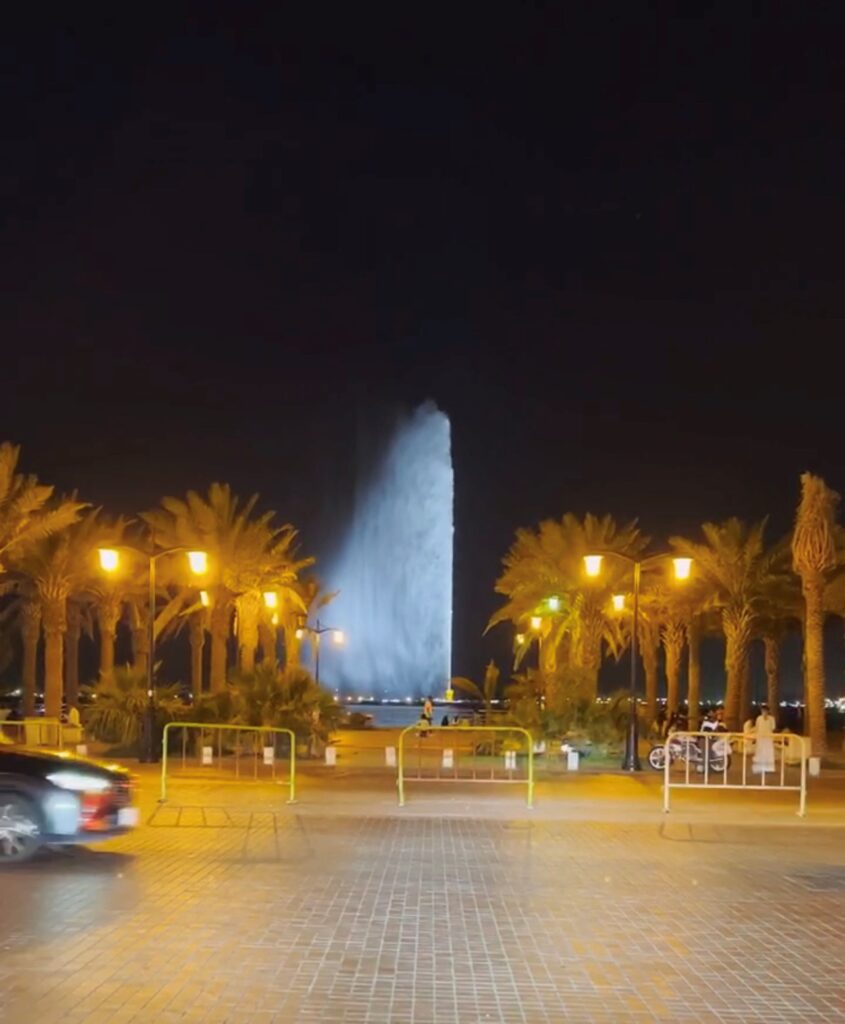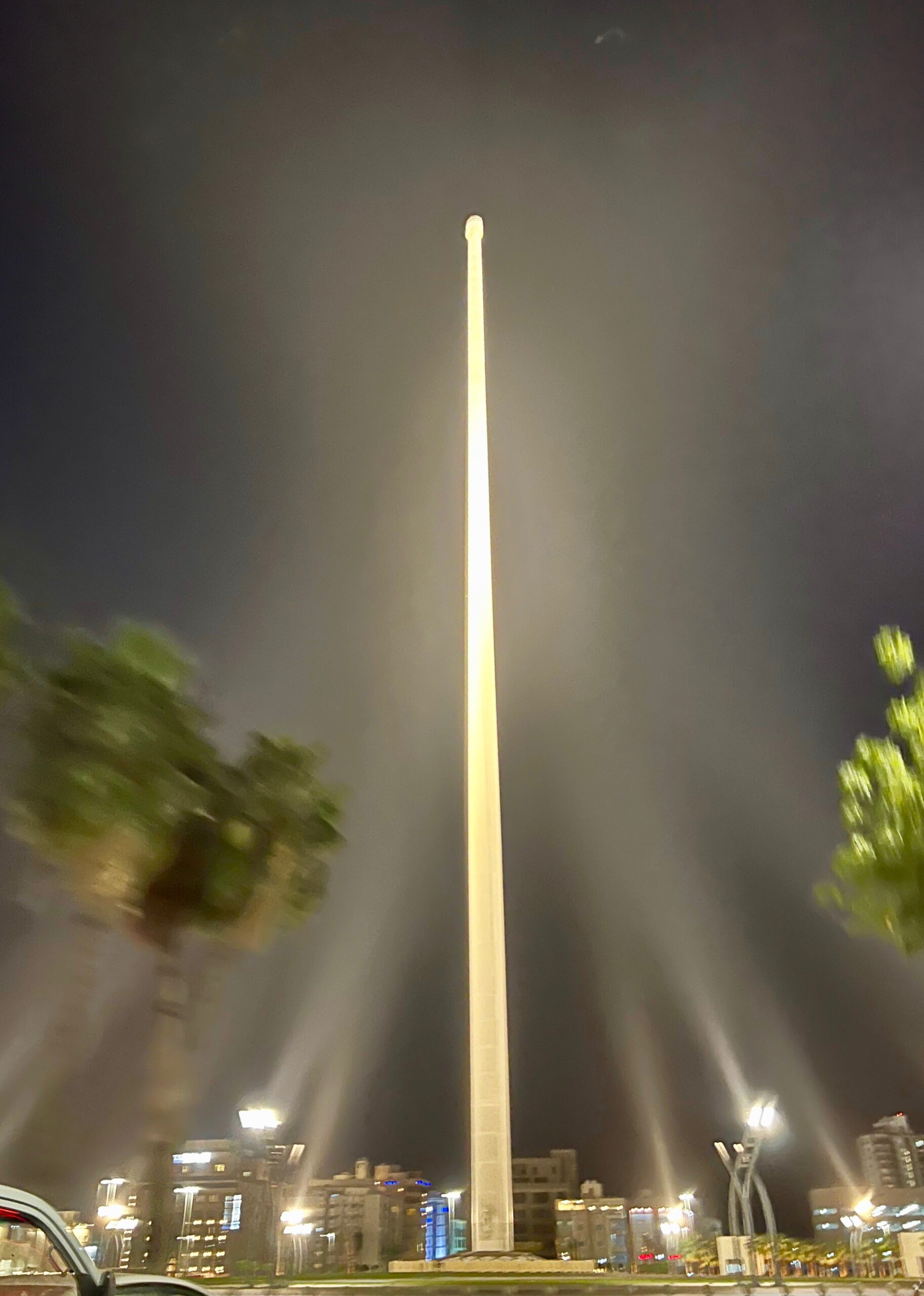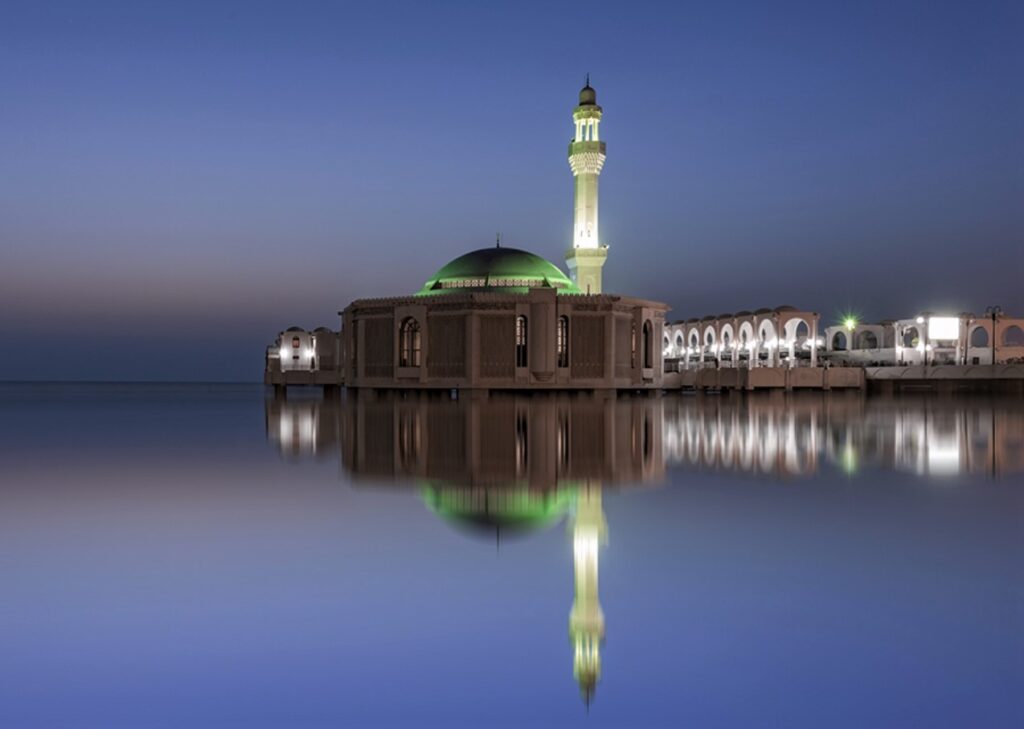The Kingdom of Saudi Arabia is approximately the size of France, Spain, Germany, Italy, United Kingdom (twice), Greece, and Portugal combined. In reference to the United States, its land area is roughly equal to all states east of the Mississippi River. Saudi Arabia is more than 3 times the size of the state of Texas.
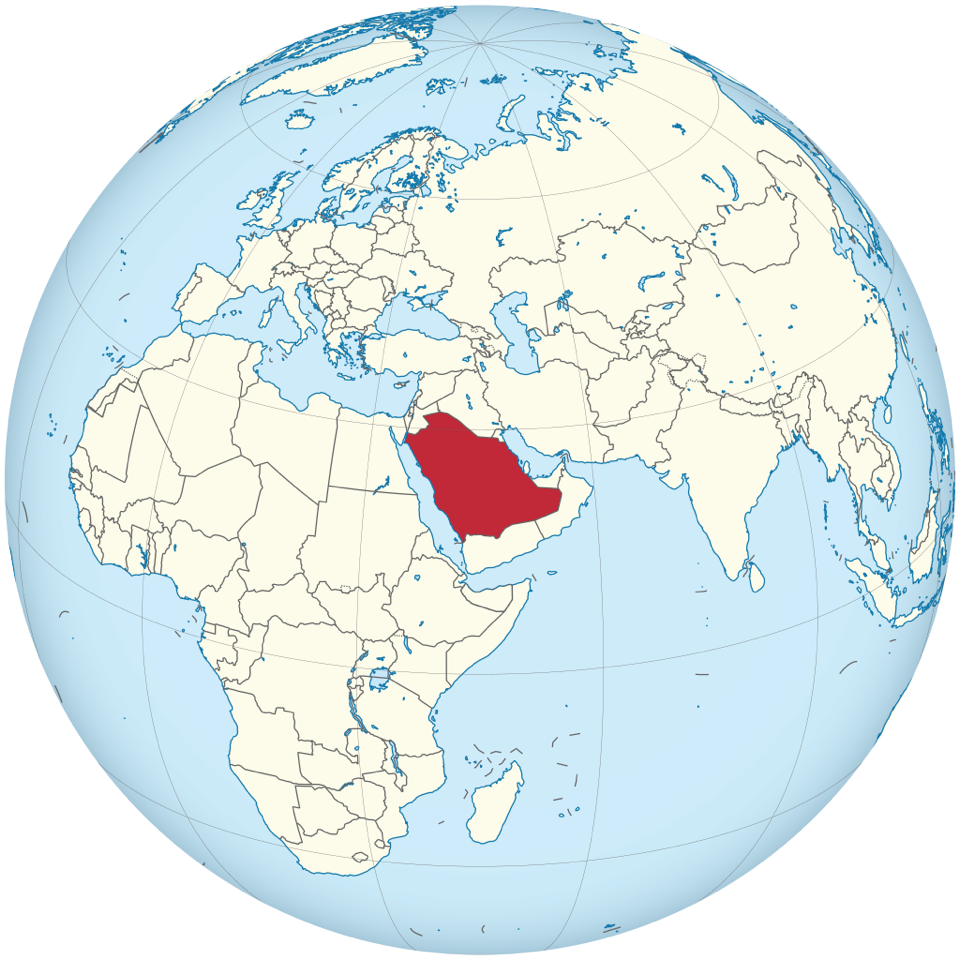
Saudi Arabia shares land borders with seven countries: Iraq, Jordan, Kuwait, Oman, Qatar, the United Arab Emirates, and Yemen. Across a 16 miles (25 kilometer) causeway in the Gulf lies the island kingdom of Bahrain.
With over 35 million inhabitants, Saudi Arabia has 13 provinces all united by the Arabic language, but each with unique dialects, traditions, cuisines, landscapes, and heritage.
One cannot help but be moved by the imposing contours and beauty of the seemingly endless, ever-changing, windswept Arabian dunes, the sand-washed ancient cities, and the sparkling waters of the Red Sea and the Gulf.
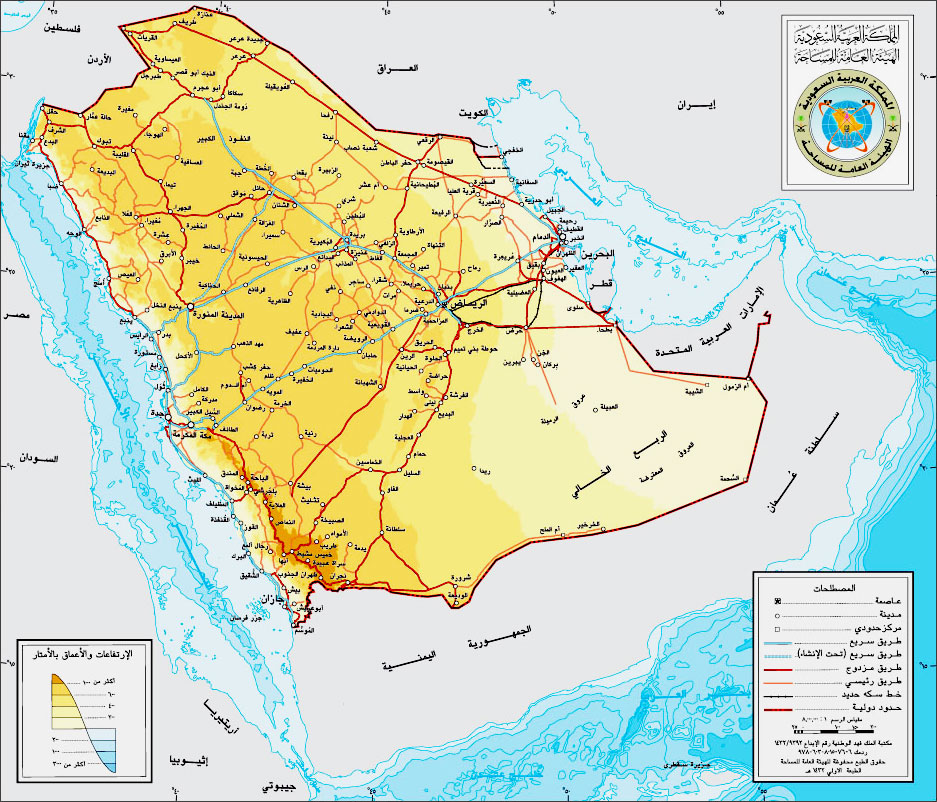
There are no permanent rivers or lakes in the Kingdom.
The desert, often scorching hot by day, can become surprisingly cold at night. When it rains, the water gathers and is stored in the dampened sand. Little evaporation occurs once rain sinks below seven feet. It is believed that some plants today are still drawing moisture from rain that fell more than a thousand years ago.
There are still Bedouin tribes traditionally known for their bravery, chivalry, generosity, and hospitality in Saudi Arabia. Very few of them still live a nomadic life or depend solely on their animals for food. Most live near towns, hold jobs, send their children to school, and only camp in the desert during specific periods of the year.
Lawrence wrote in Seven Pillars of Wisdom: “Bedouin ways were hard, even for those brought up in them and for strangers terrible: a death in life.” No man can live this life and emerge unchanged. He will carry, however faint, the imprint of the desert, the brand which marks the nomad; and he will have within him the yearning to return, weak or insistent according to his nature. For this cruel land can cast a spell which no temperate clime can match.
From Arabian Sands, by Wilfred Thesiger.
There are many cities as well as Bedouin areas on the Arabian Peninsula. Islam was born in two of those cities—Makkah and Medina. From there, the religion spread to a large swathe of the world, from Spain to China. As it expanded, it promoted a love of learning and science. Discoveries and developments from Arab and Muslim scientists provided the foundation for many of the ideas and concepts that were part of the European Renaissance and beyond.
In 2019, the Kingdom of Saudi Arabia began issuing tourist visas. Through its Vision 2030 development plan it has made significant investments to develop infrastructure and promote its diverse collection of mountains, beaches, coral reefs, grasslands, and forests, let alone the largest sand sea in the world! Tourism and travel bridge people, time, and cultures, leading to deeper understanding.
When I was the Executive Vice President at the Huntsman Cancer Foundation, I traveled to Saudi Arabia several times.
I wanted to return.
I explored the Kingdom for 12 weeks in early 2022 with the purpose of writing and photographing the 13 regions of Saudi Arabia. I had the privilege of visiting Riyadh, AlUla, Madain Saleh, Tabuk, NEOM, Jeddah, Taif, Jubbah, Hail, Al Khobar, Dammam, Al-Ahsa, and Abha in the Asir Region.
This is about the seaside port of Jeddah on the eastern shore of the Red Sea.
![]()
Like all ancient and living ocean ports, Jeddah is a place of access, of mixing, and of exchange. It has a history reaching back into biblical times.
Jeddah was derived from the Arabic word for “Grandmother” in reference to Eve who, as the myth recounts, was buried in Historic Jeddah at a site known as the “Cemetery of Our Mother Eve.”
Jeddah faces out across the Red Sea towards Africa just 120 miles to the west: towards Sudan, Egypt, Eritrea, Djibouti, and Ethiopia.
[su_lightbox type=”image” src=”https://ncusar.org/blog/wp-content/uploads/2023/08/ksa-jeddah-highlighted-1920×1080-1.jpg”]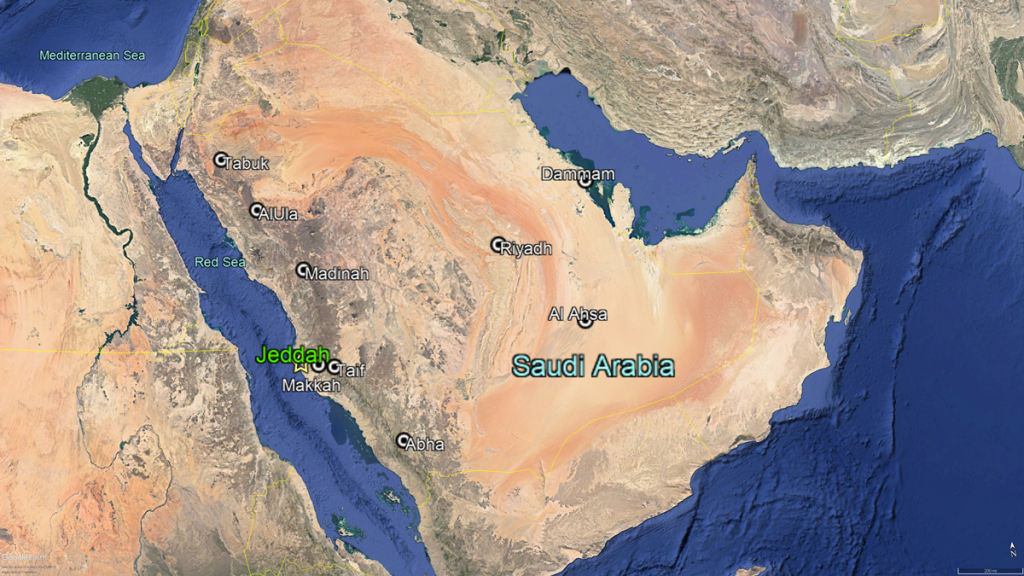 [/su_lightbox]
[/su_lightbox]
Historic Jeddah has a rich tradition of harvesting rainwater. Around the 6th century CE, Persians settled in the city. They constructed the first water supply system in the form of wells and cisterns inside and out of the city walls to secure enough continuous fresh water.
From the 7th century it was established as a major port for Indian Ocean trade routes.
In the 16th century, the Jeddah wall with forts, towers and cannons was built by Hussain Al Kurdi, the Governor of the city of Jeddah. He wanted to fortify the city from the attacks from the Red Sea by the Portuguese. He also surrounded the city with a deep moat for added fortification.
Historically, the city of Jeddah had no gardens due to a lack of water. During the 18th century, the people of Jeddah, especially merchants, began constructing cisterns under their houses to store rainwater that was collected on the roof and then channeled downwards in pipes.
Historic Jeddah is known as Al-Balad (translated to “The Town” in Arabic).
It is an open air, living museum.
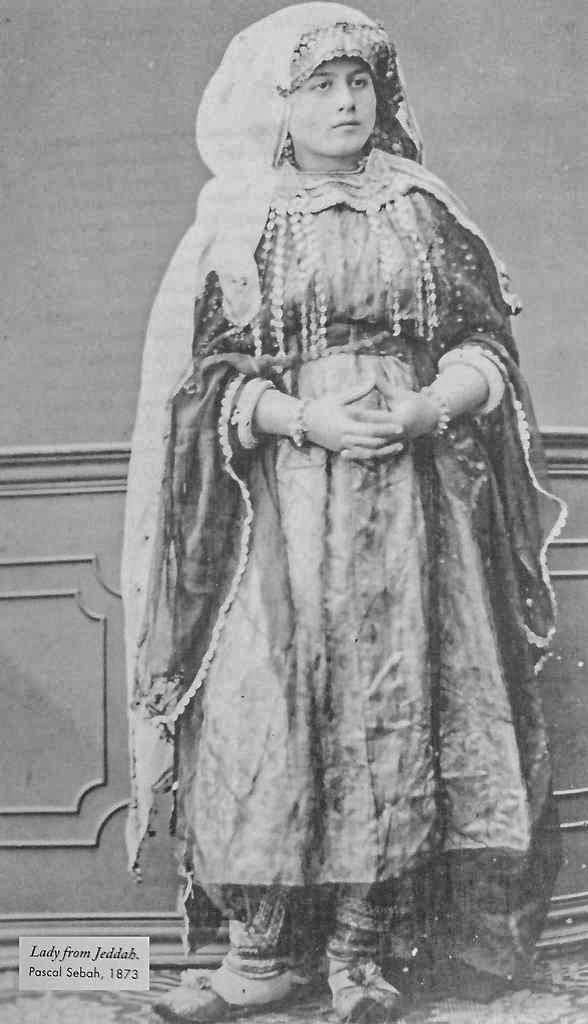
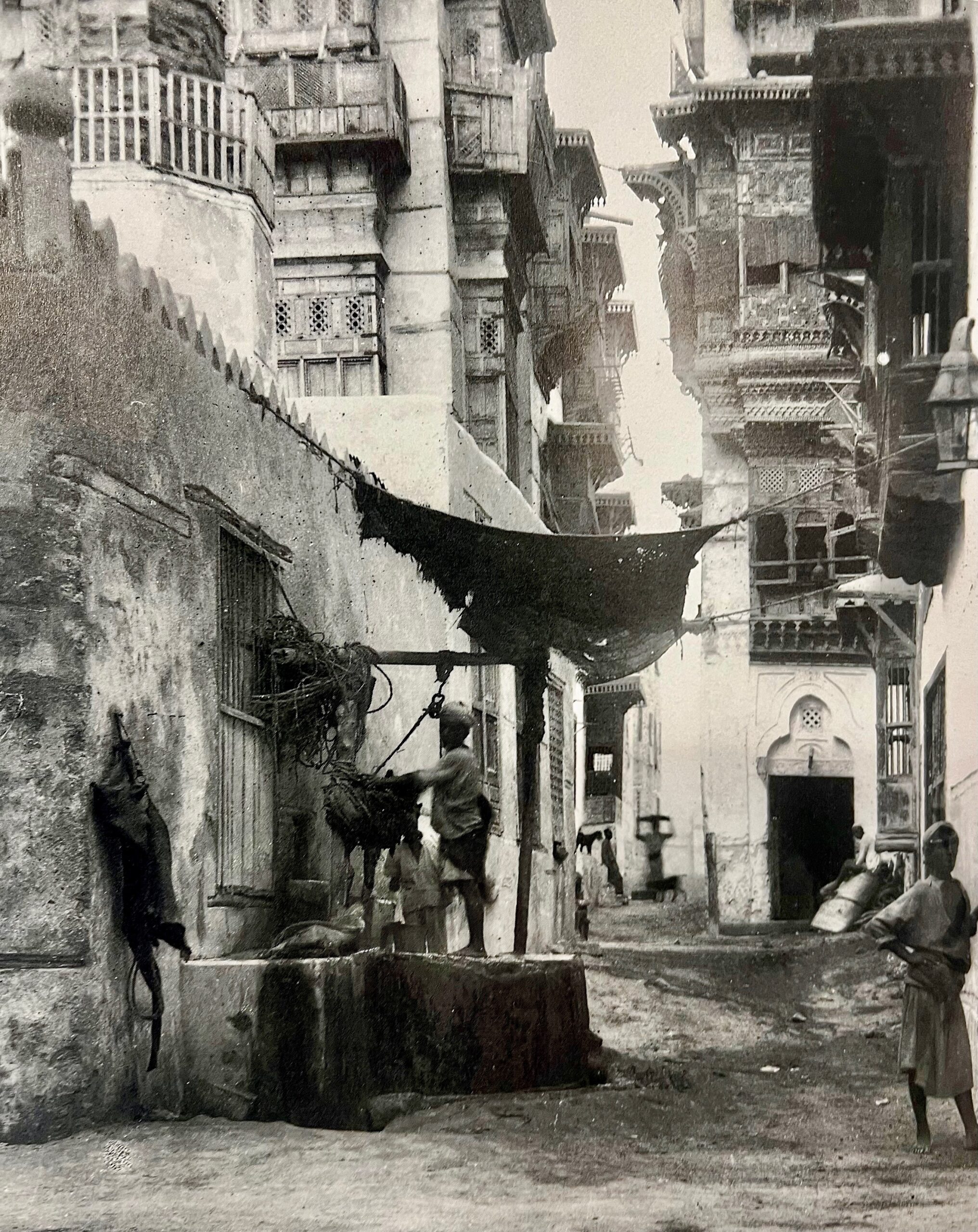
Many buildings in Historic Jeddah exemplify the architectural style of Arab, Ottoman, and Persian cultures blended together. The name “Roshan,” originally derived from the Persian word “Rosen,” meaning balcony, evolved over time into “Rawasheen,” in reference to the prominent traditional wooden perforated screens used to cover windows and external openings.
The rawasheen let breezes flow into the buildings, providing shady perches and privacy—those inside can see out, but those outside cannot see in.
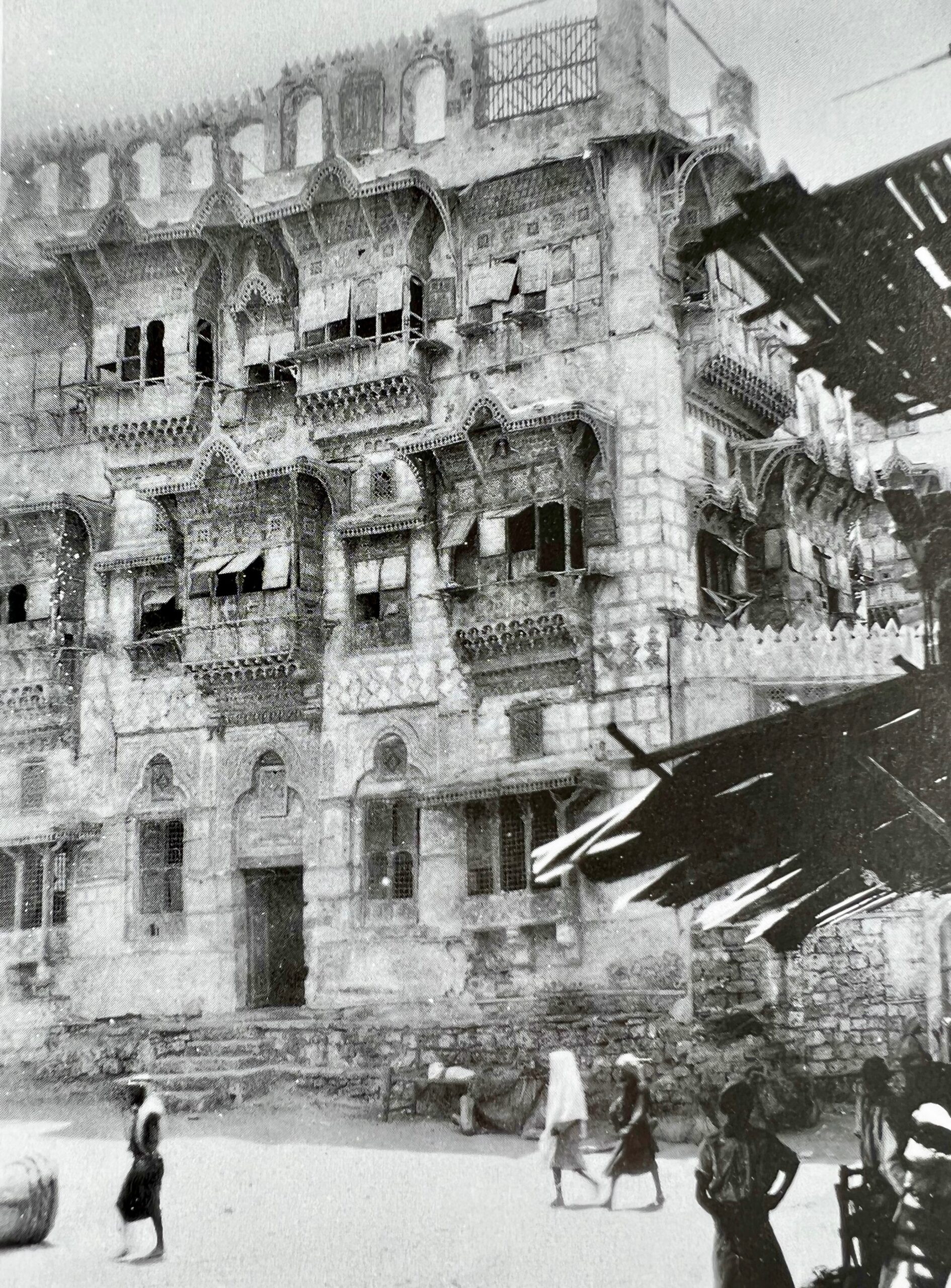

Functionally, the screens served – and continue to serve – as curtains, windows, and air conditioners. The screens’ filtered light softens the effect of the strong desert sun. It also minimizes the intrusion of dust and sand.
Jeddah was the landing harbor for pilgrims who reached Arabia by sea. The goods the pilgrims brought with them from Asia and Africa were sold in the city. Travelers from Java and India brought spices. The intangible mixed heritage of the city has immensely contributed to the cultural mix that defines Jeddah.
Jeddah was, for centuries, the most important, largest, and richest port on the Red Sea. Today, Historic Jeddah is the last surviving urban site along the Red Sea coast that still boasts a commercial-based economy, multi-cultural environment, isolated outward-oriented houses, coral masonry construction, facades with intricate decorative woodwork, and long used methods to aid internal ventilation common before the advent of modern air-conditioning units.

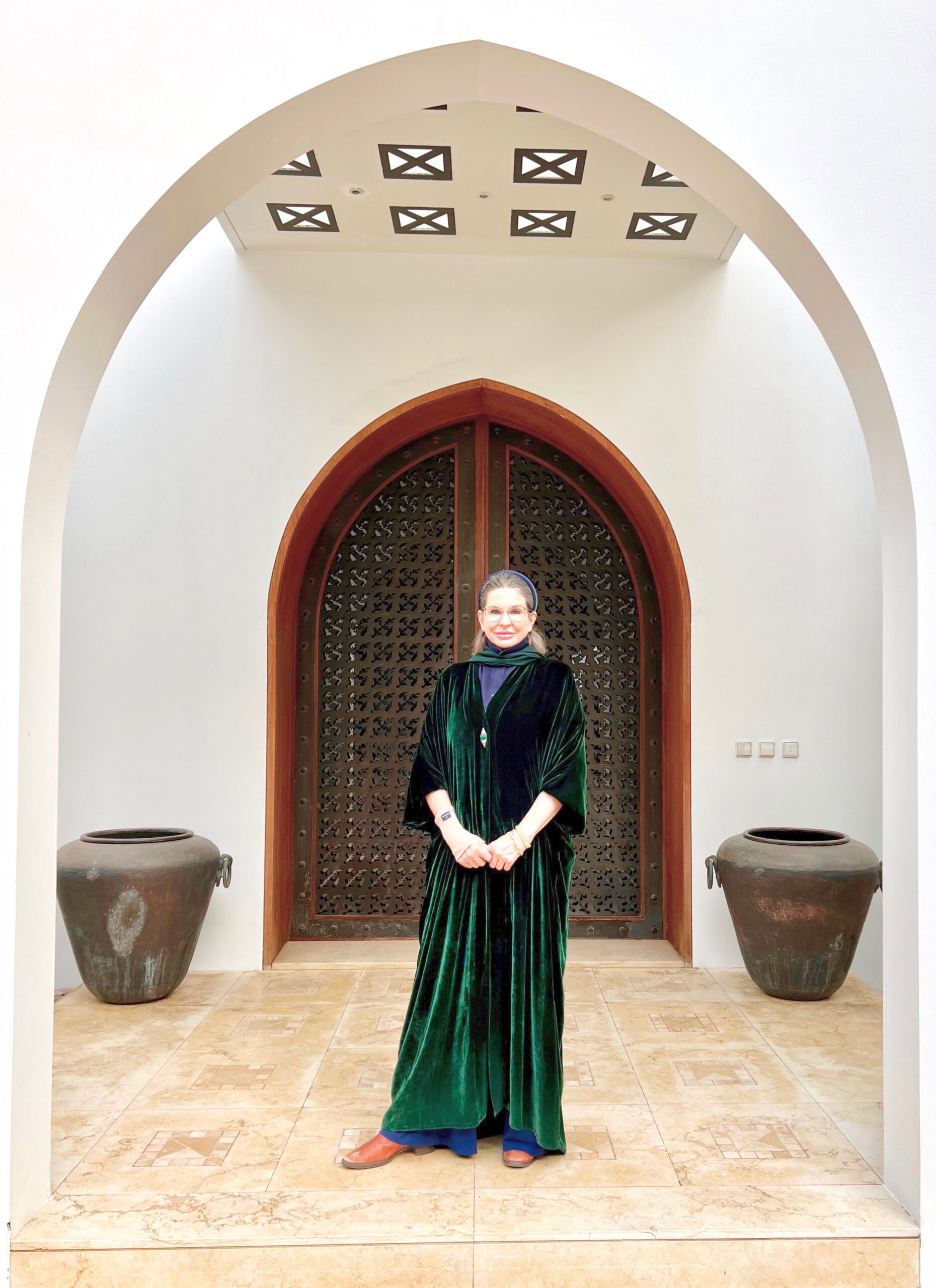
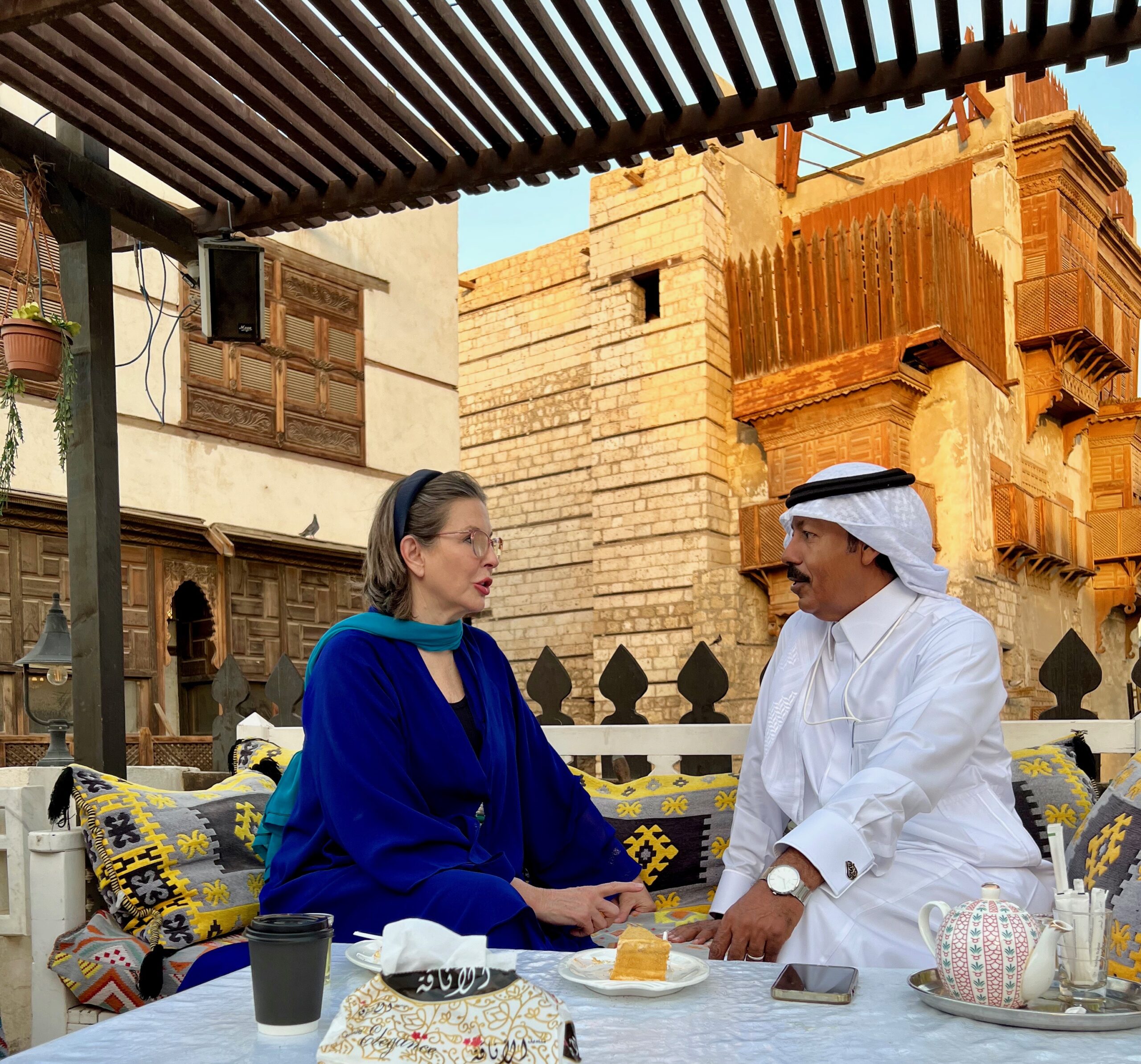
We spent time exploring and photographing the once walled-in city of Historic Jeddah, which was inscribed as a UNESCO World Heritage Site in 2014.
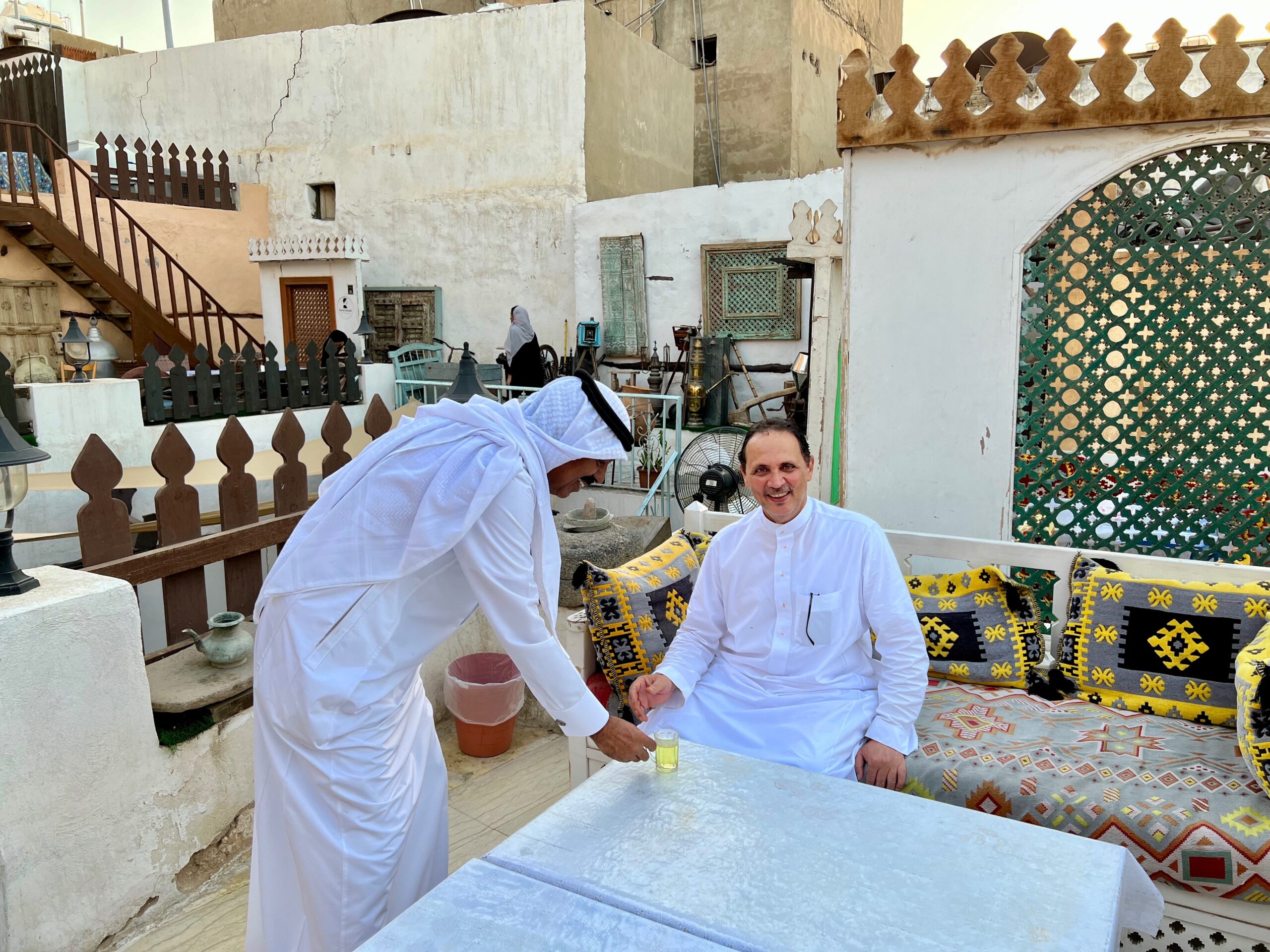
Of the 650+ buildings in Historic Jeddah, some are jewels and some are crumbling. Only 56 are in imminent risk of collapse or have collapsed. All are being restored in accordance with UNESCO preservation guidelines.
The view from the rooftop of the café. Some houses fallen ~ but they are soon to be restored.
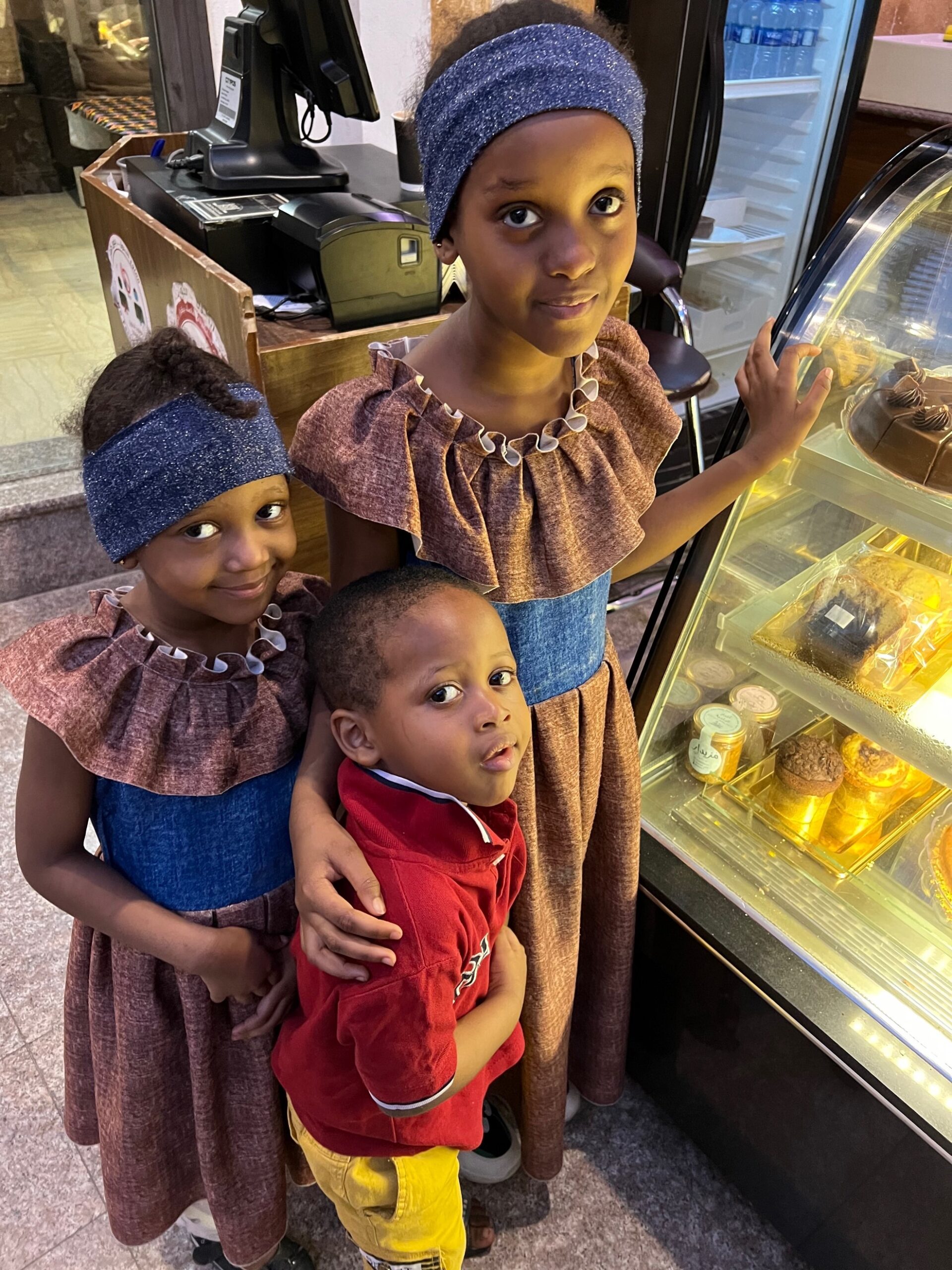

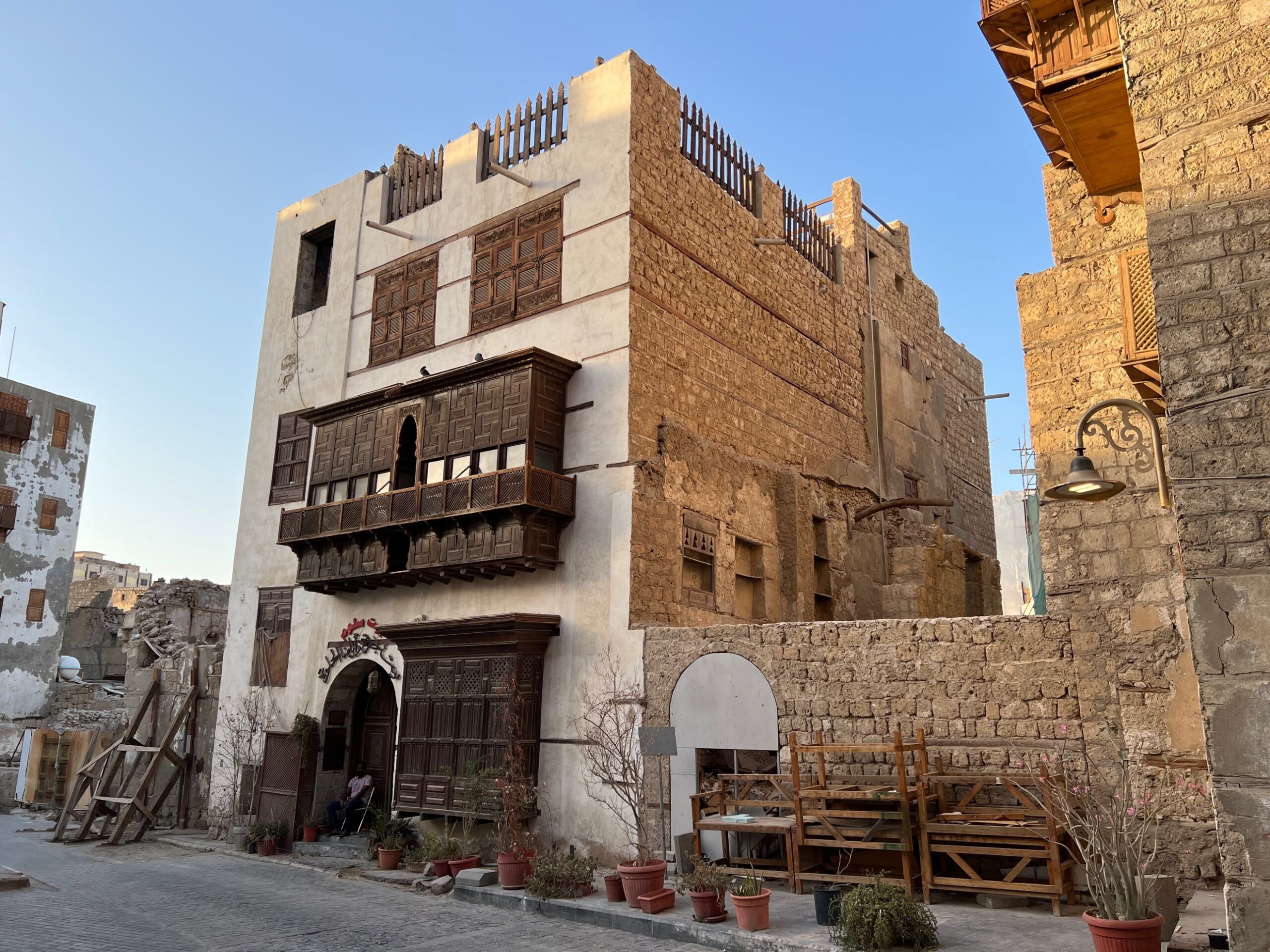
The opening of the Suez Canal in 1869 brought about steamboats linking Europe with Asia and India. The mercantile elite that emerged from the resulting commerce built Al-Balad’s lavish family homes. Today, these families have moved to the suburbs to build more modern estates. Now the area is home to immigrants from Yemen, Africa, India and Pakistan.
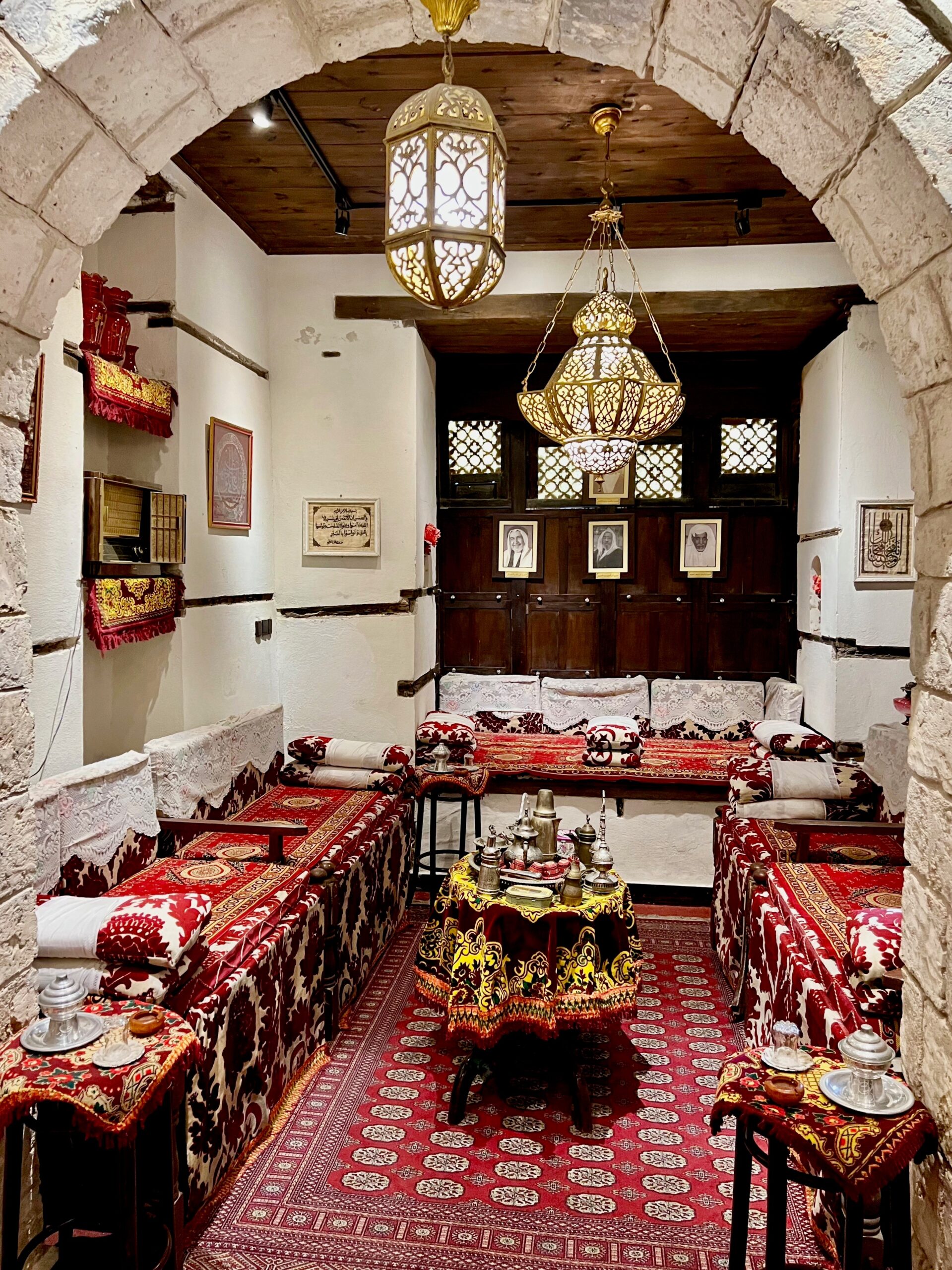
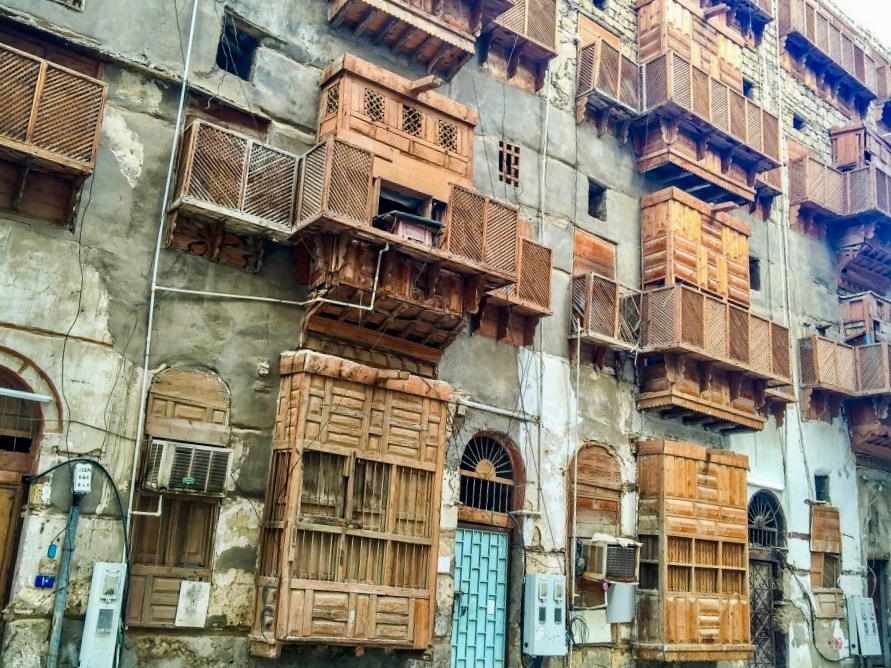
No two rawasheen are the same. All the rawasheen and doors were originally a natural teak wood color. The green color came after the unification of the country in the early 1900s. The Saudi Arabian Flag is green. The blue was an idea by a mayor in the 1980s—he loved the blue color of the Red Sea. He brought workers from Tunisia to paint the rawasheen and doors.
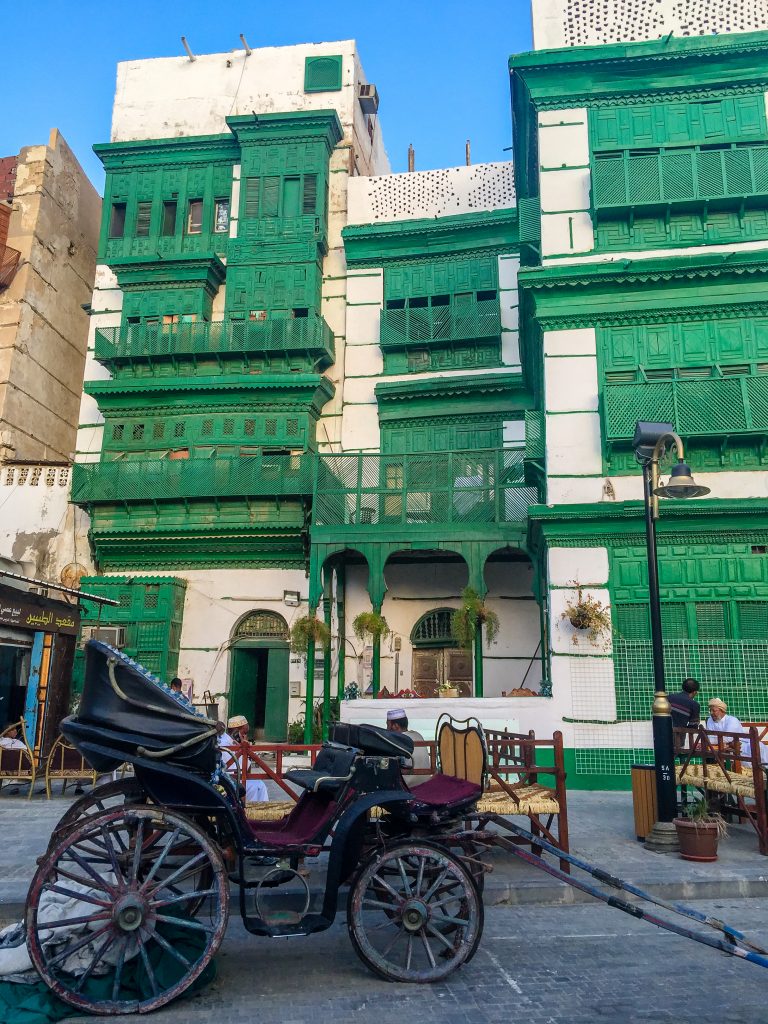
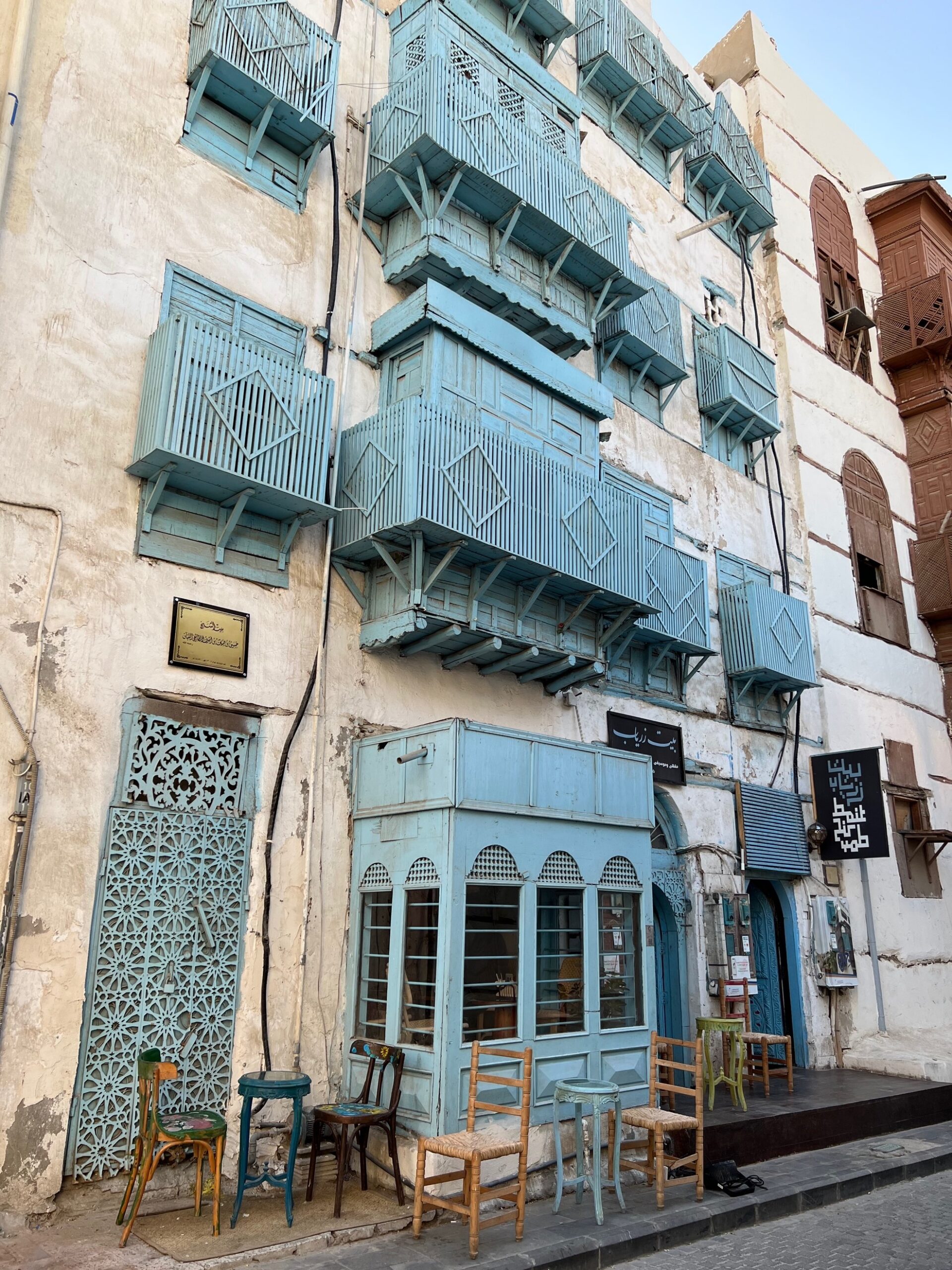

I love the red accents on the door. Historic Jeddah is known for its charming doors and gates.
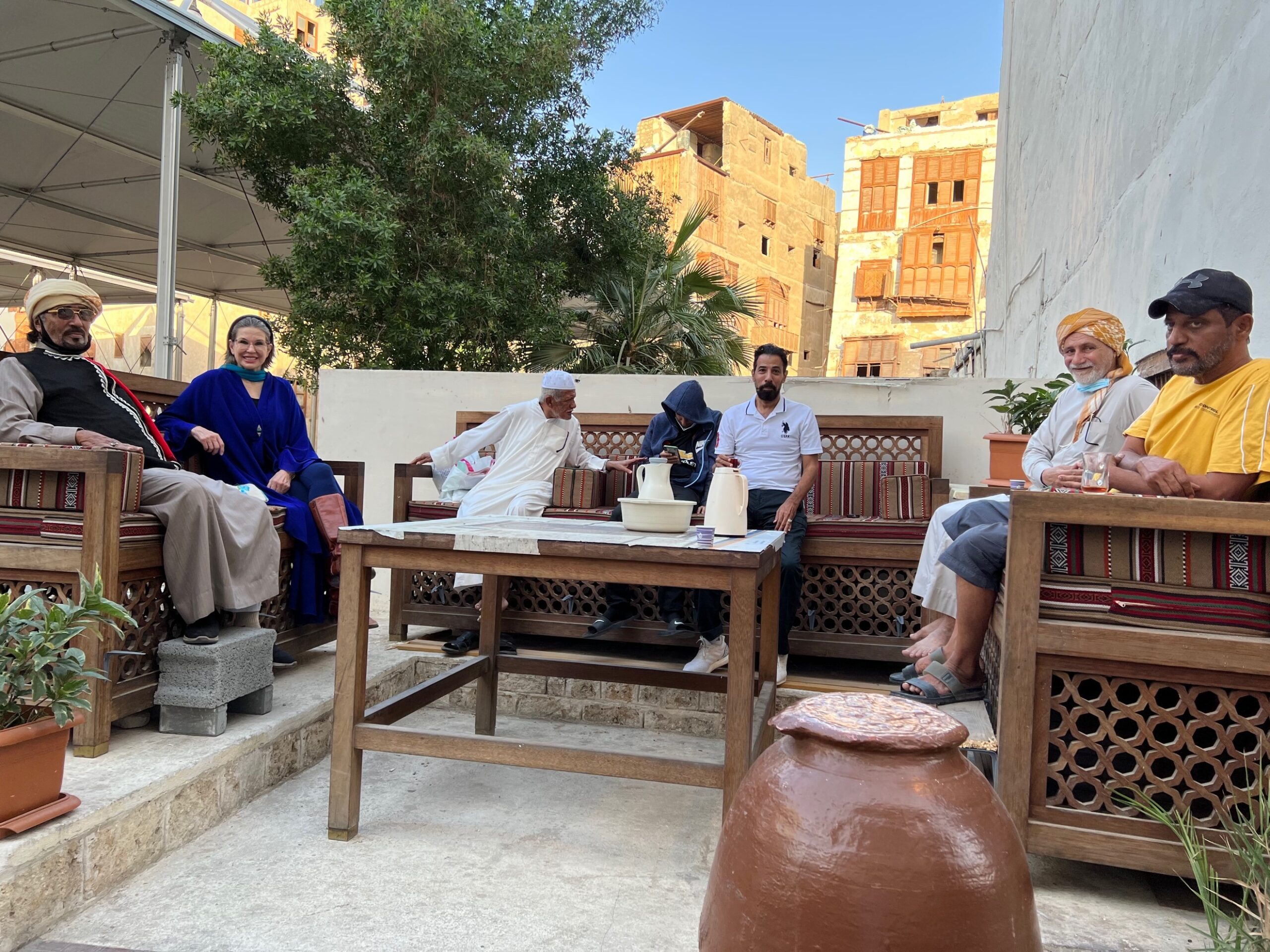
I have met and sat with many of these men on my previous visits. They remember those visits, and are most friendly and welcoming. By the way, the groups of men do not intermingle.
The large vase holds ful medames. Ful is a dish of fava beans. Fava beans are one of the oldest domesticated food legumes. They have been part of the Middle Eastern diet since the 4th century. Each region prepares them in their own particular style.
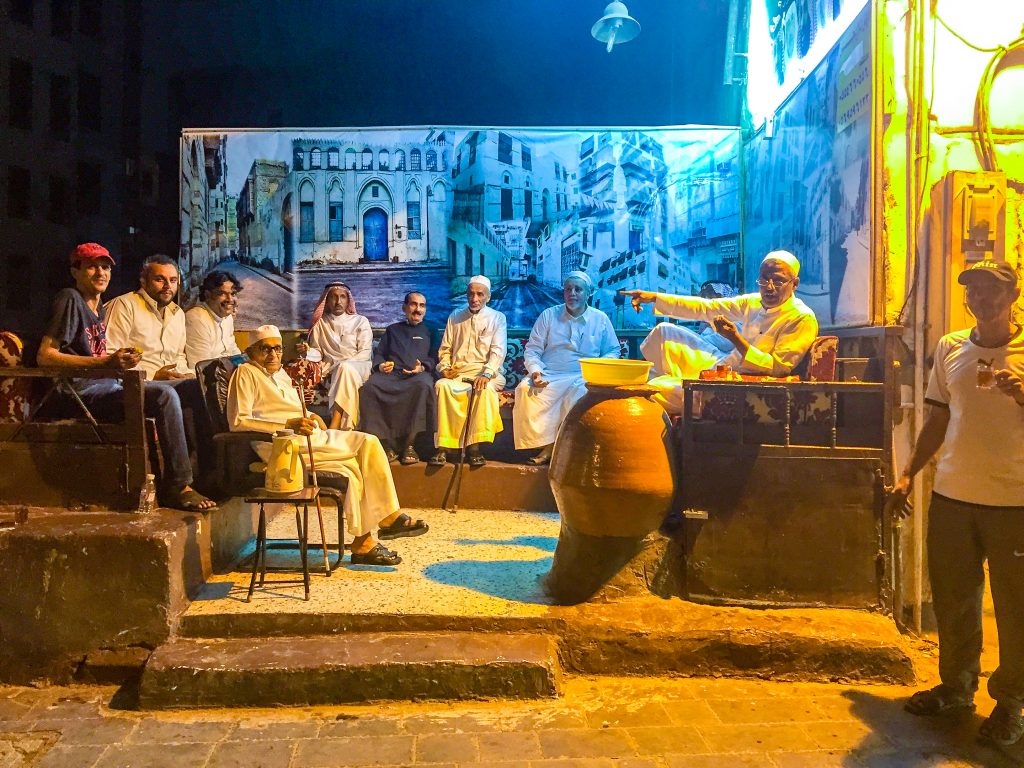
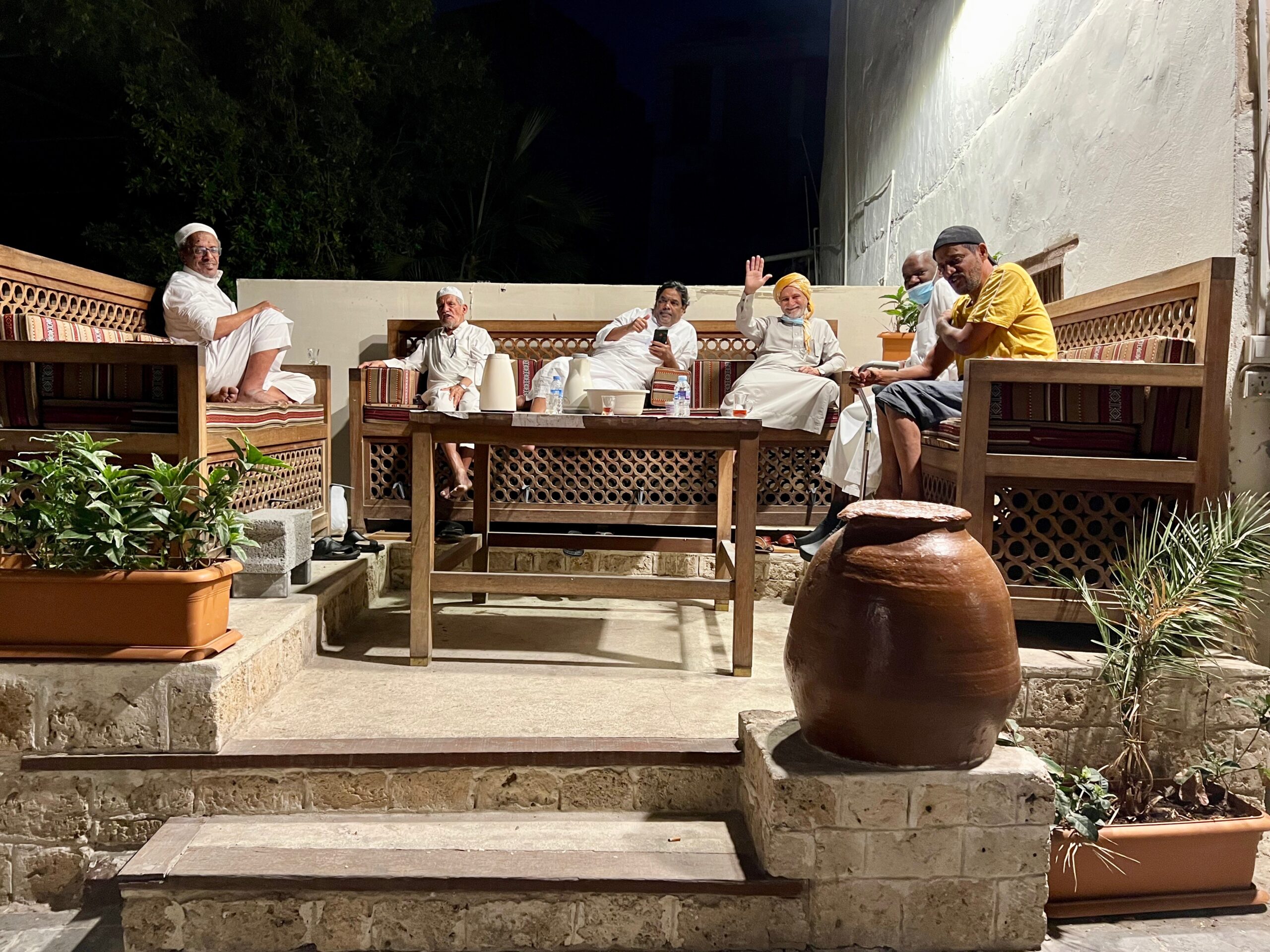

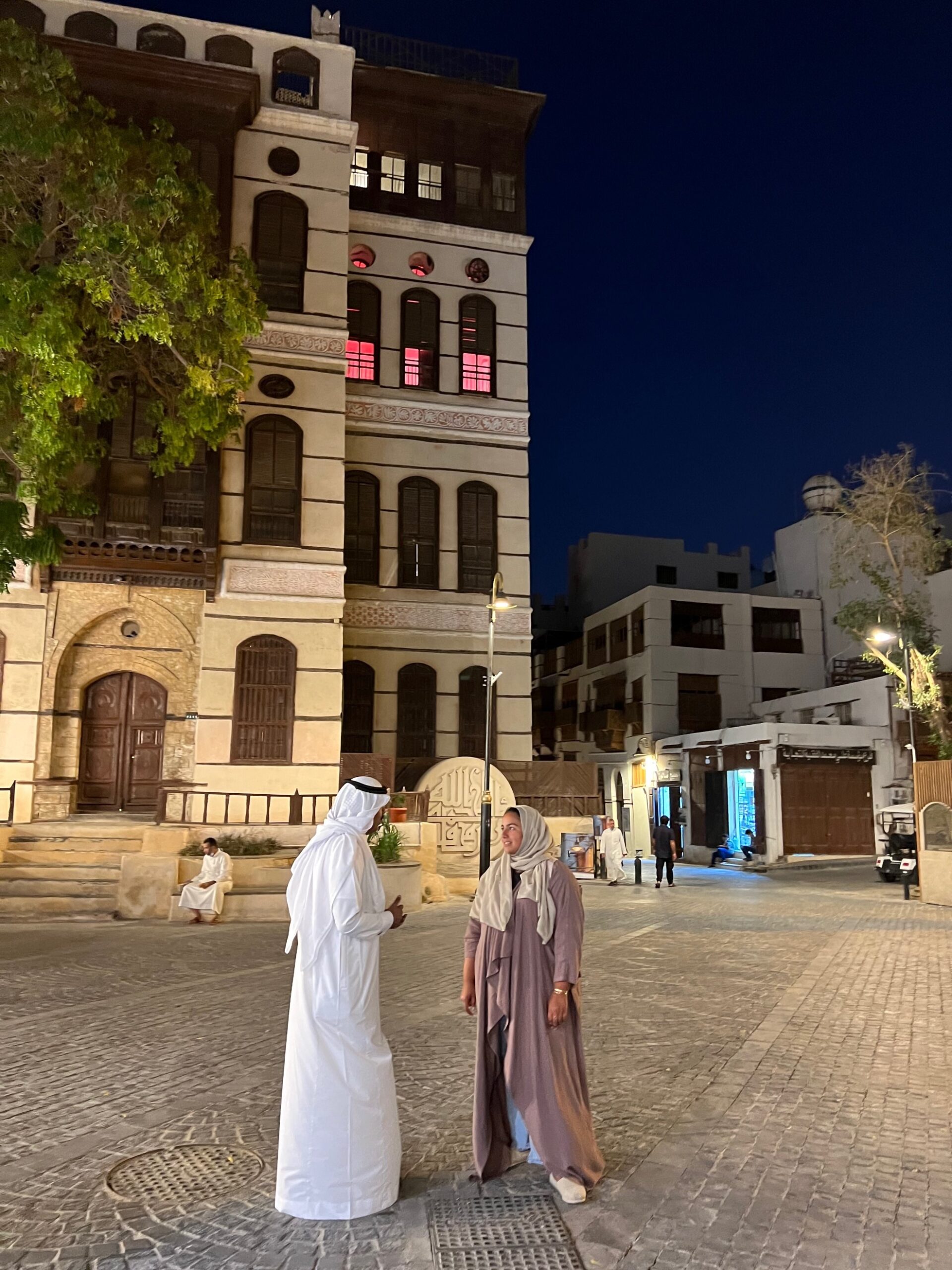
Naseef House is also known as “The House with the Tree.” The house is where the legendary King Abdulaziz Bin Abdulrahman Al Saud lived in the 1920s when the Kingdom’s Western and Central Provinces were joined pursuant to establishing the foundations of the Third Saudi State.
The ceilings are very high to gain the benefits of passive cooling. The staircase was built very wide with short steps so donkeys could easily climb the stairs to deliver food to the kitchen located on the top floor.
Years ago, young men would sweep off the roof before rain came and the rainfall would be directed to downspouts taking the water to a huge basement cistern. This house has been entirely refurbished and is open to the public.
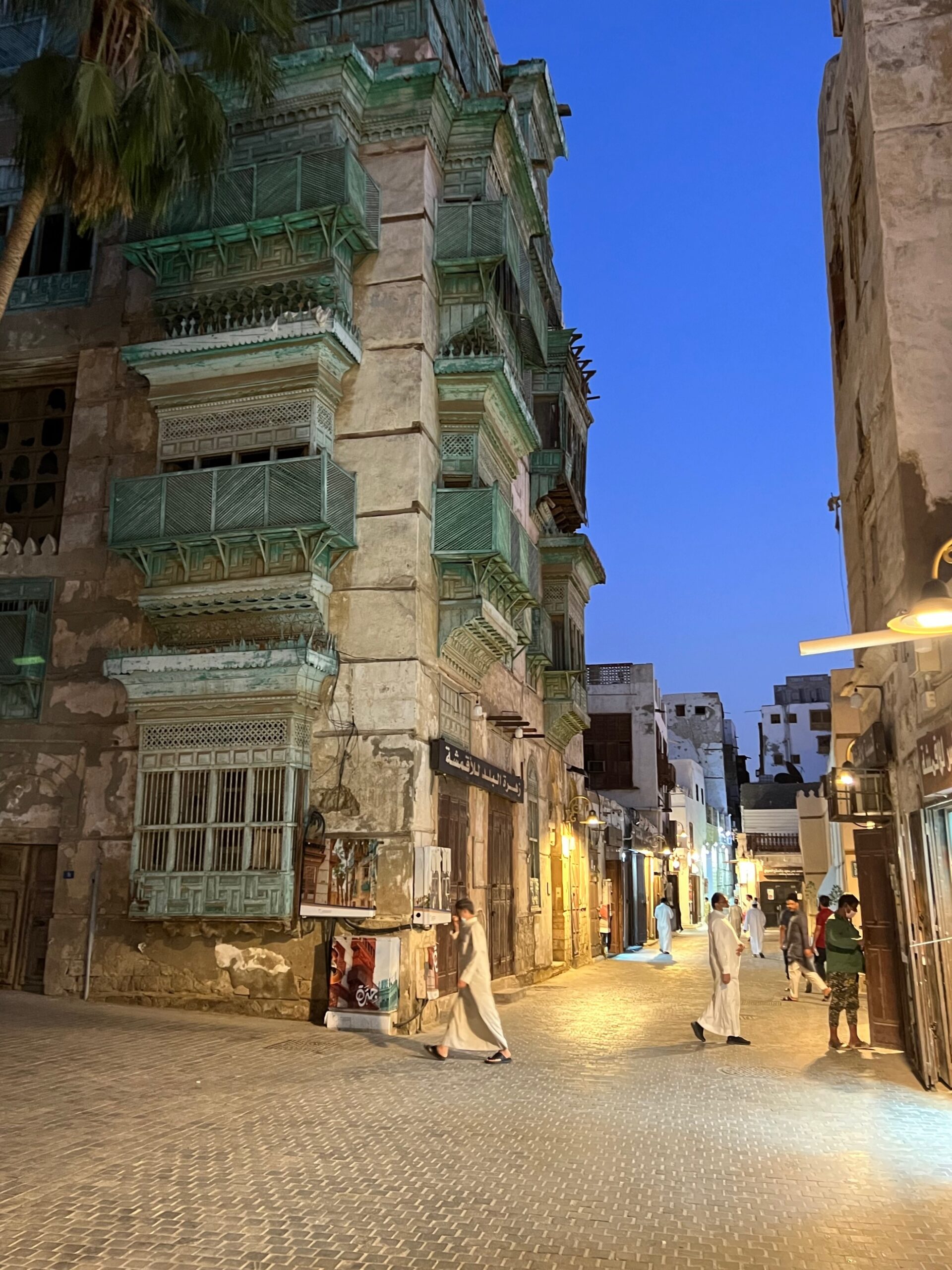
The intertwined streets with souqs, mosques, and traditional buildings are jumbled together in an area of roughly one mile. The houses are several centuries old. At sunset, the call to prayer begins with the voice of one muezzin, shortly thereafter joined by others that escalate the calls from the surrounding 36 mosques. The chorus is punctuated by the honking of horns and the rattling of carts on the cobbled streets.
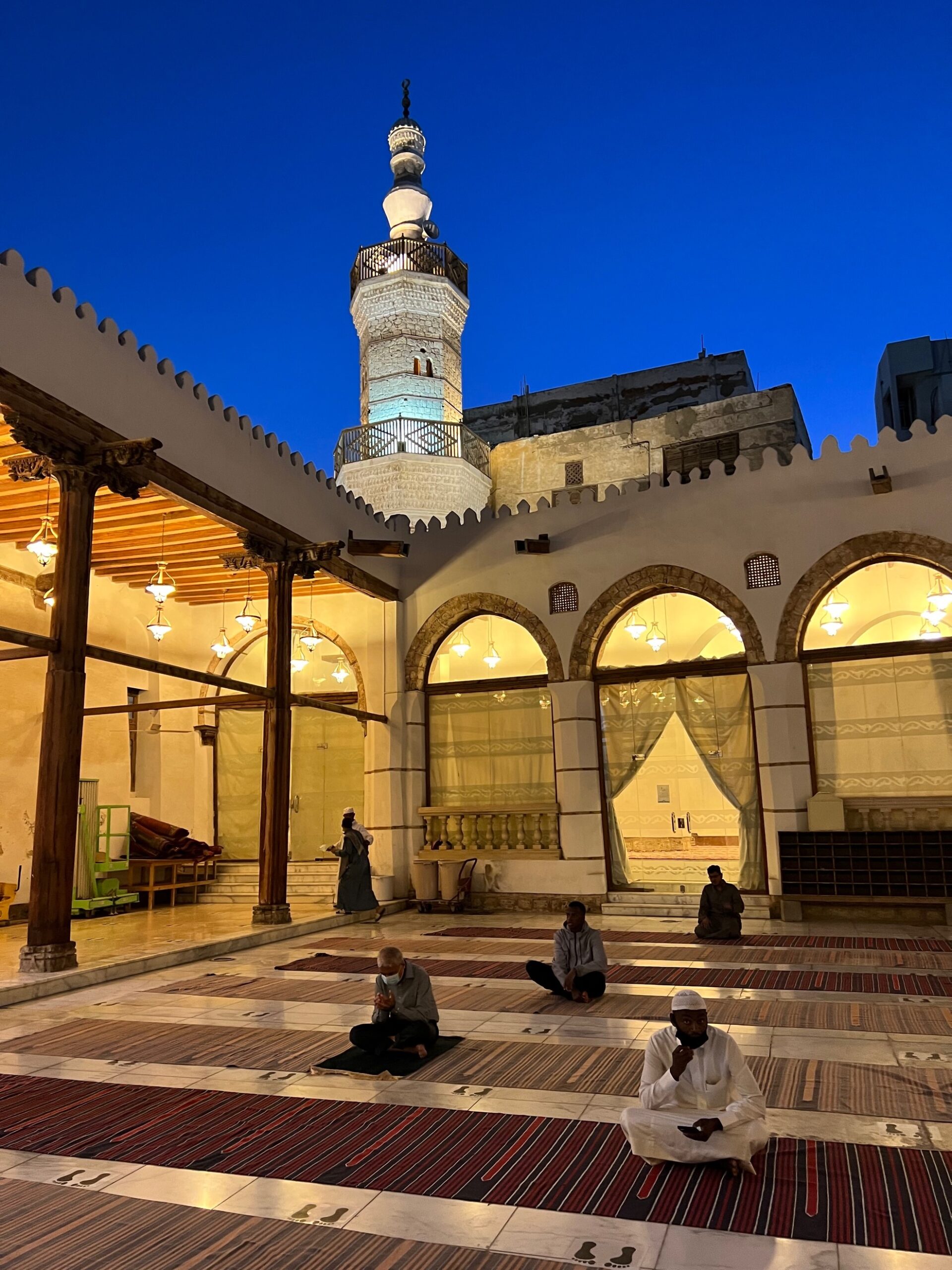
The Al Shafi’i Mosque is situated in Al Maji Souq in the Al Mazloom district of Historic Jeddah. The 13th-century mosque contributed to Jeddah’s inscription on the World Heritage List. Some believe its origins go back to the time of Caliph Oman bin Al Khattab, almost 1400 years ago. The minaret dates from the 13th Century.
The mosque (apart from the minaret) was restored by Al Khawaja Mohammed, an Indian merchant who visited Jeddah in 1533. The merchant is responsible for much of the Indian wood found in the mosque and is mentioned in one of the panels above the main door.
The newly-remodeled mosque has retained its traditional repetitive arches and columns. The marble pillars date back to the early Islamic era and are believed have been brought to Jeddah by traders from Ethiopia.
Sea mud, brick, stone, and wood were used to build the mosque. These materials were also commonly used to construct Jeddah’s traditional houses. The building’s unique construction is characterized by its rectangular shape, open yard, and four marble columns topped with pointed arches that stand parallel to its Qibla wall.

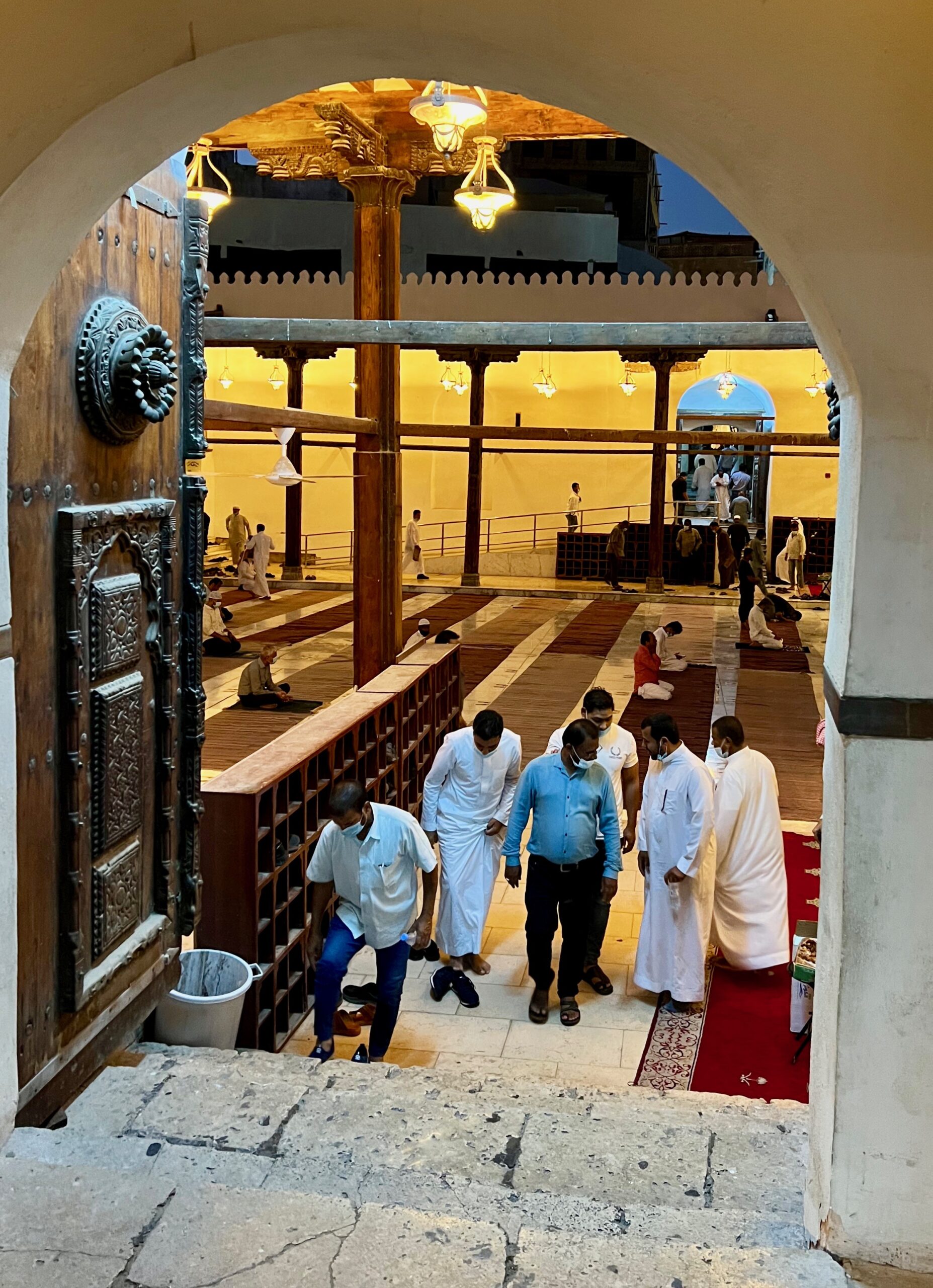
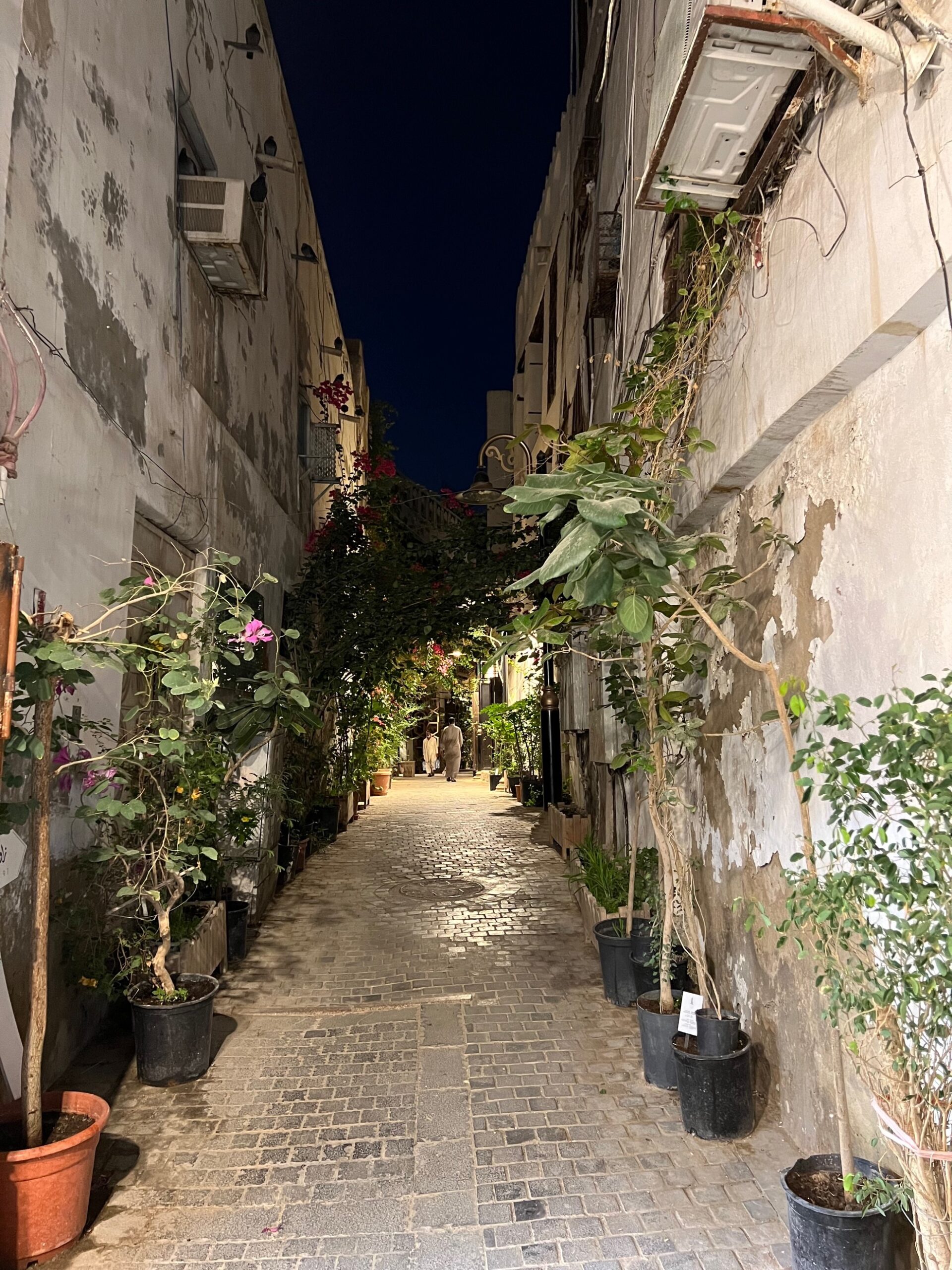


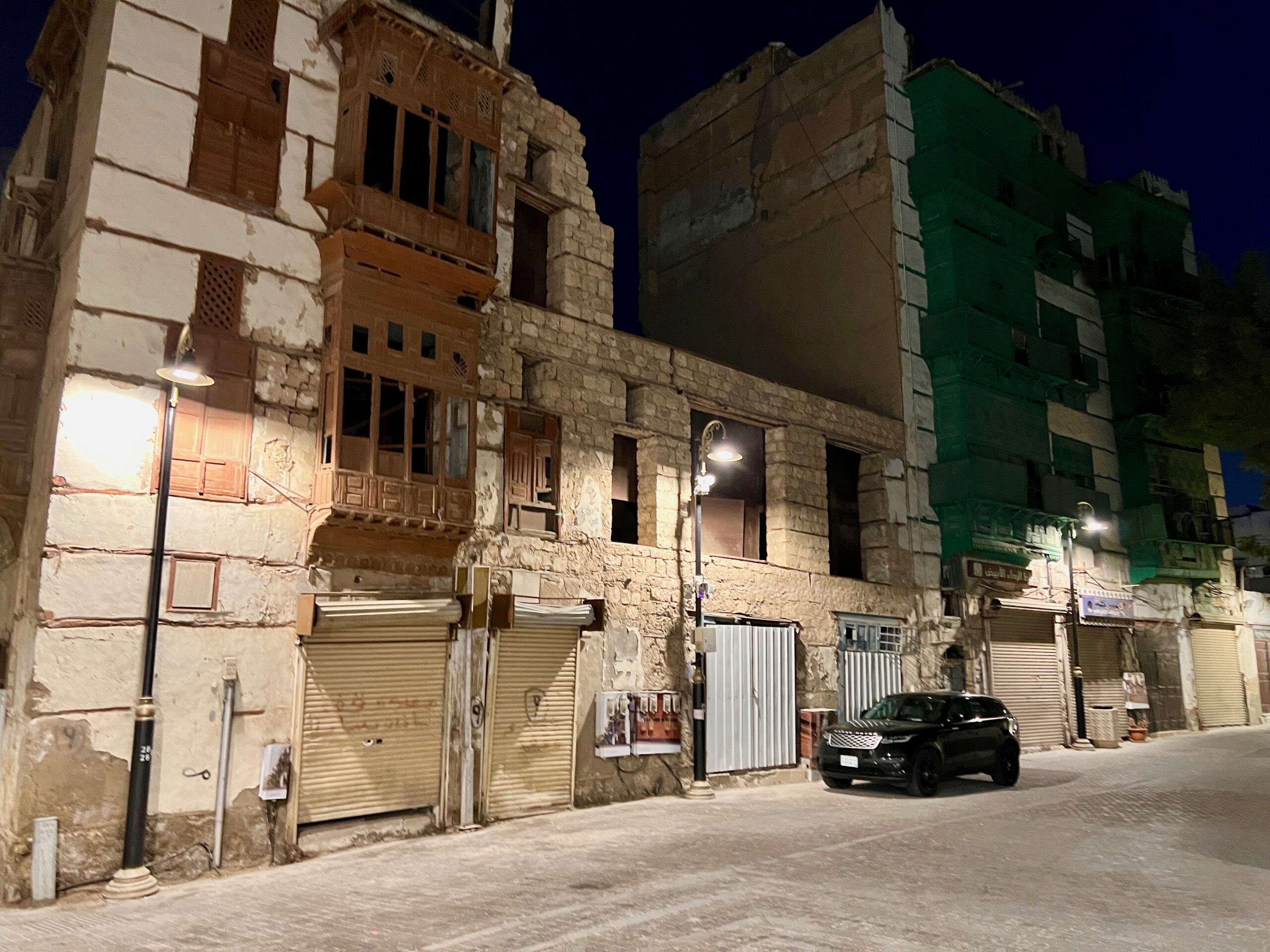

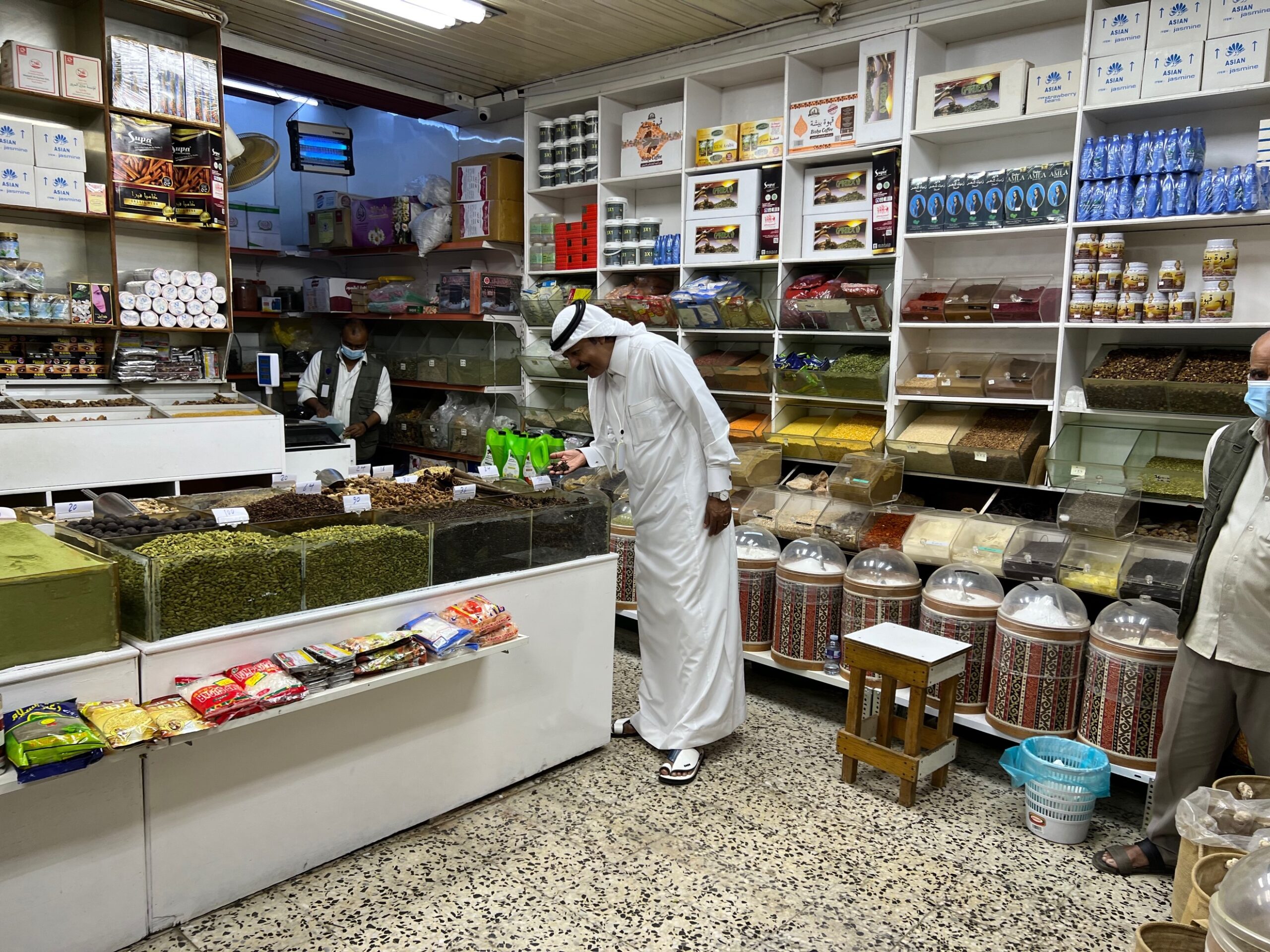
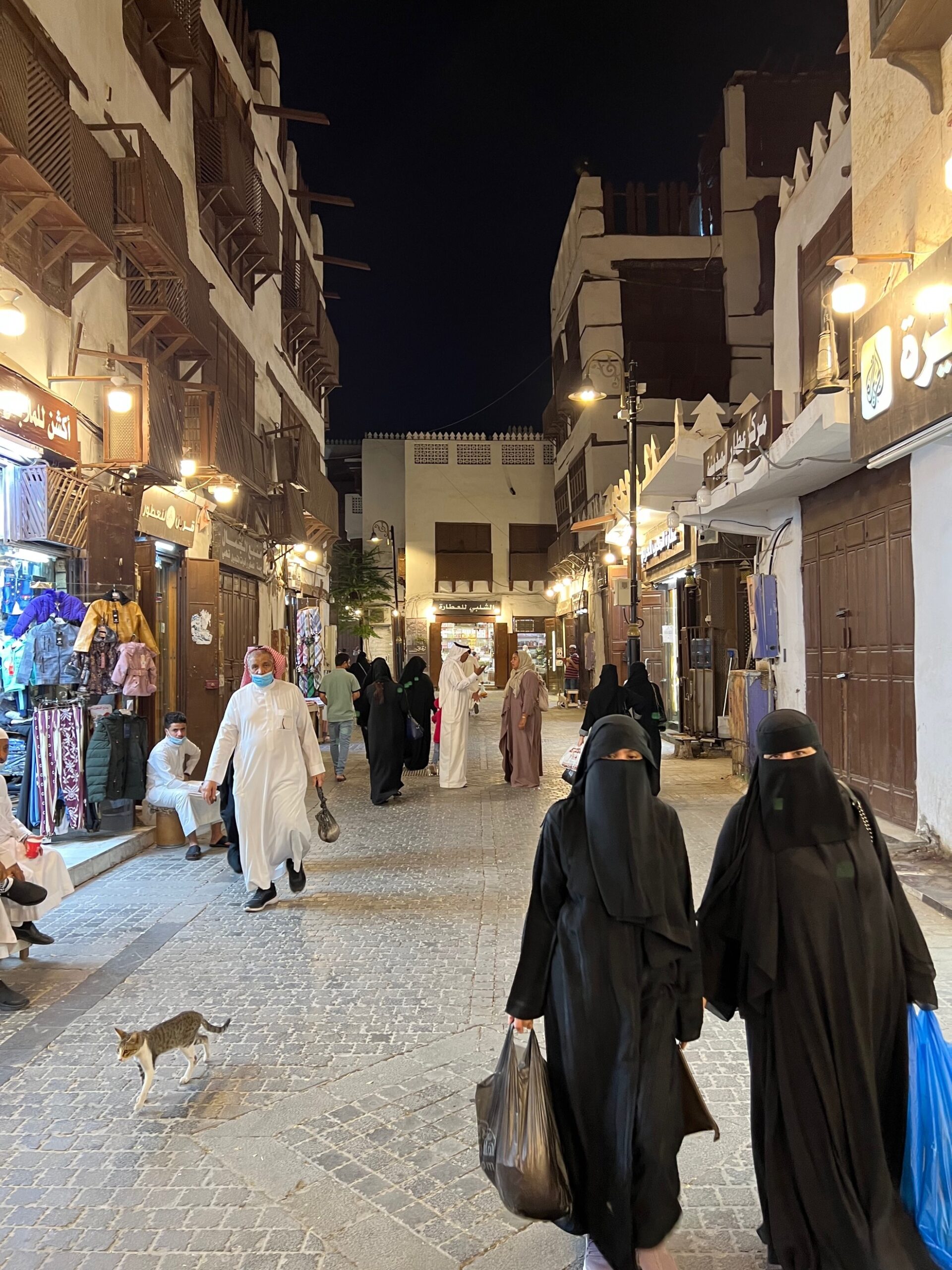
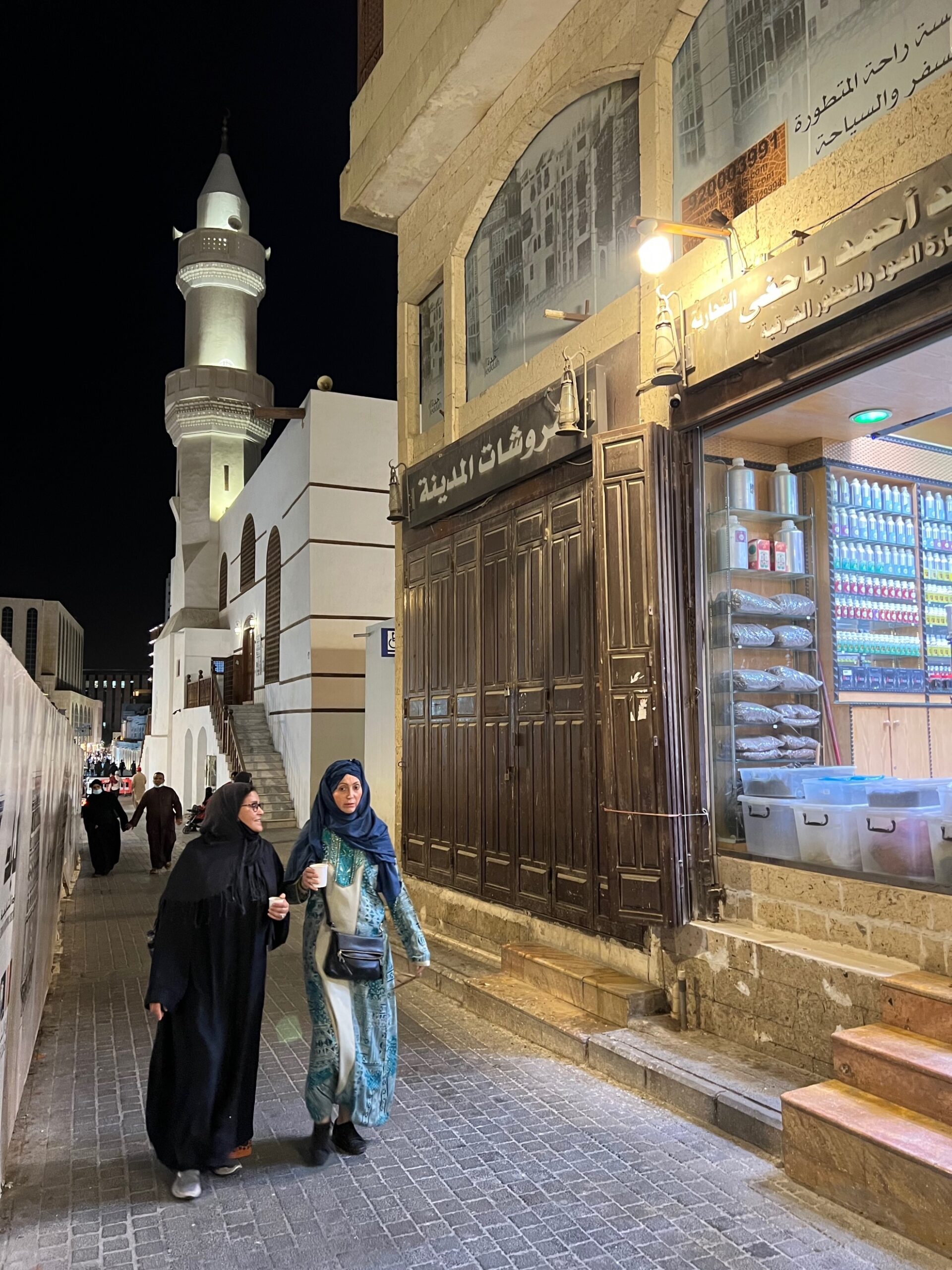
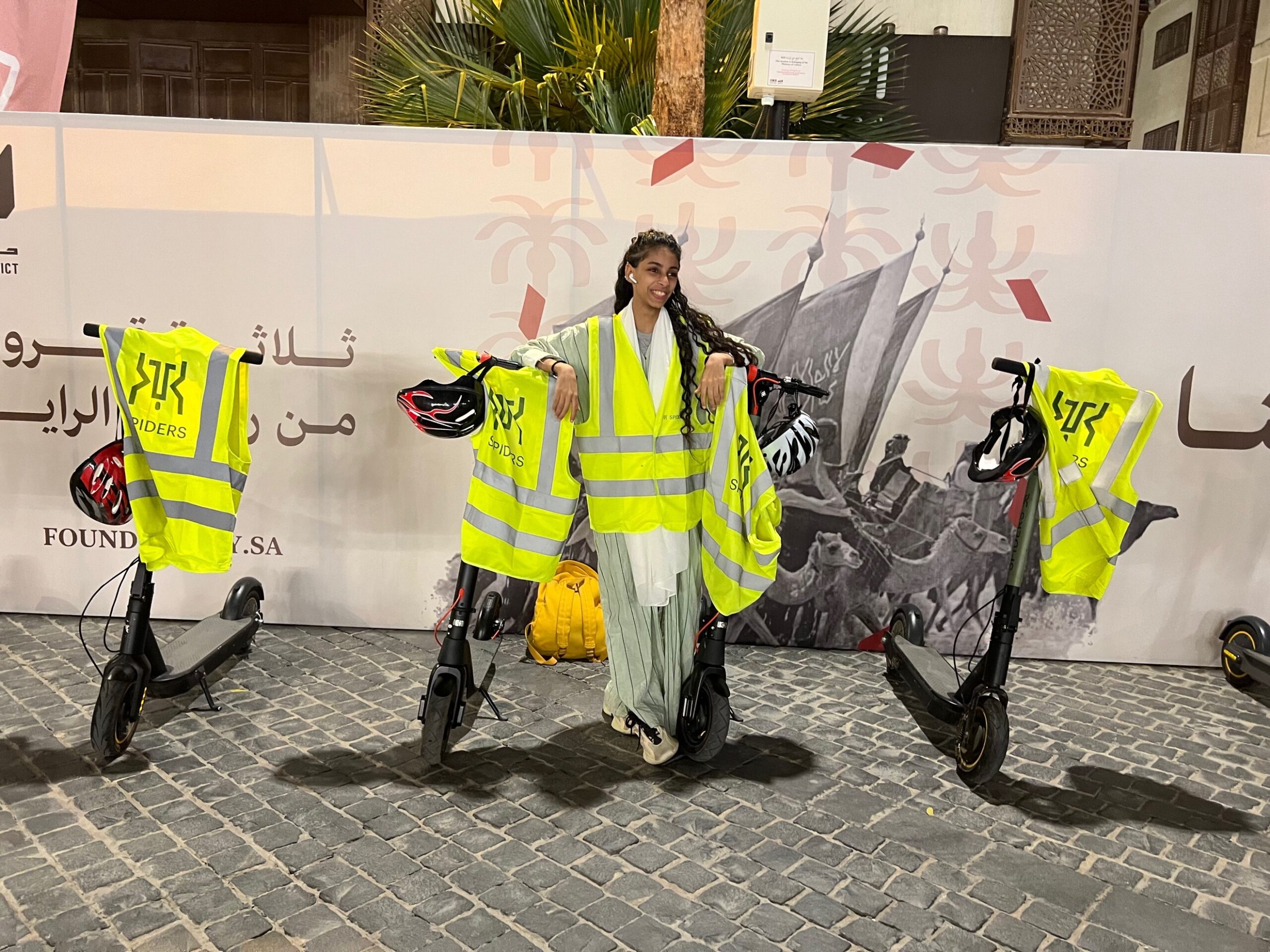
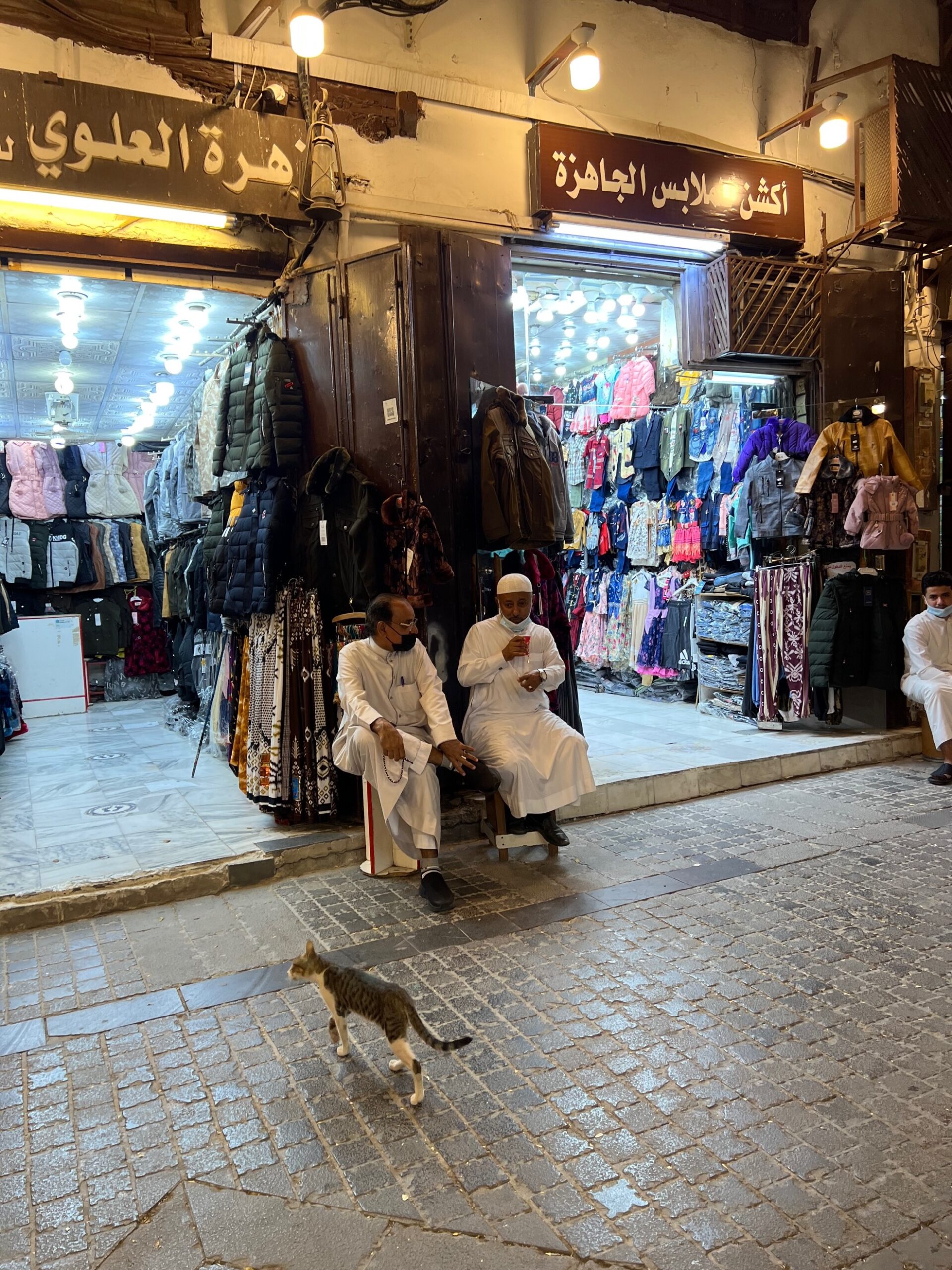
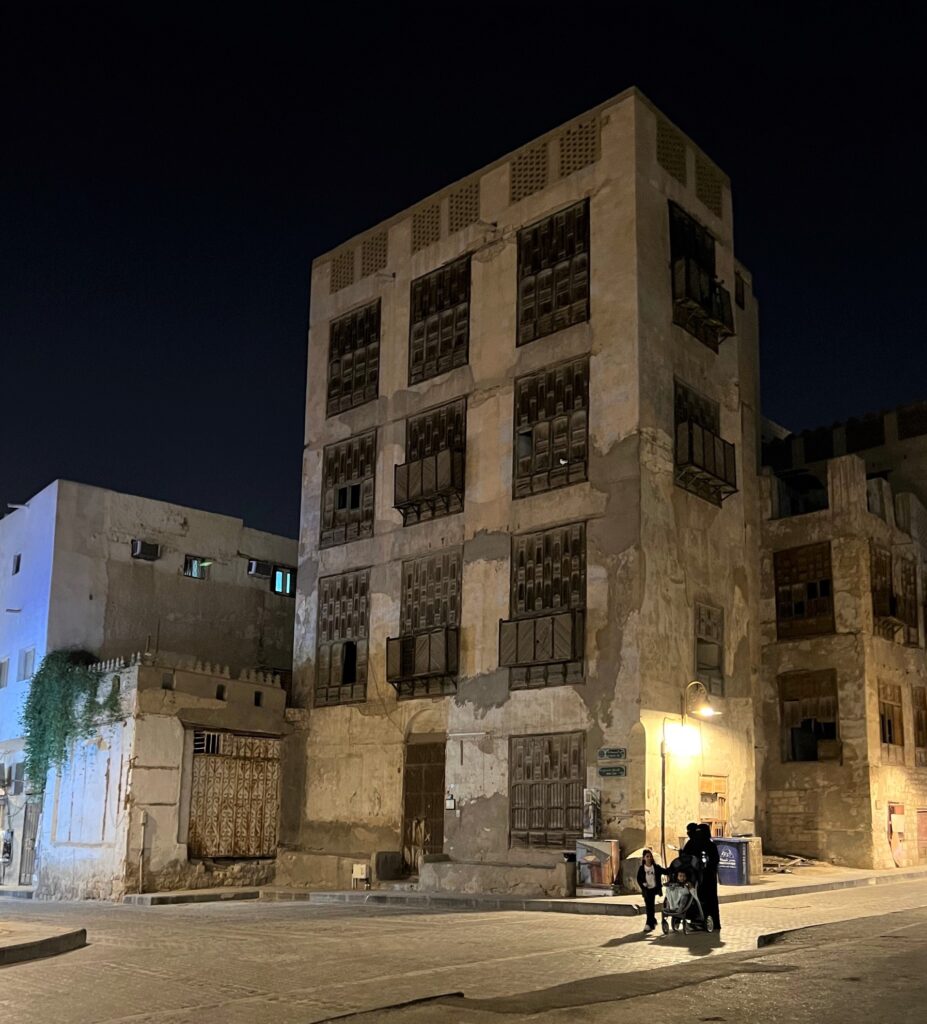

Jeddah is the second-largest city in Saudi Arabia after Riyadh. It is the largest city in the Makkah Province and the largest seaport on the Red Sea. Jeddah is a perfect juxtaposition of timeless history and spectacular modern architecture.
We drove to the tallest fountain in the world, illuminated by five hundred lights, on the Jeddah Corniche Waterfront.
